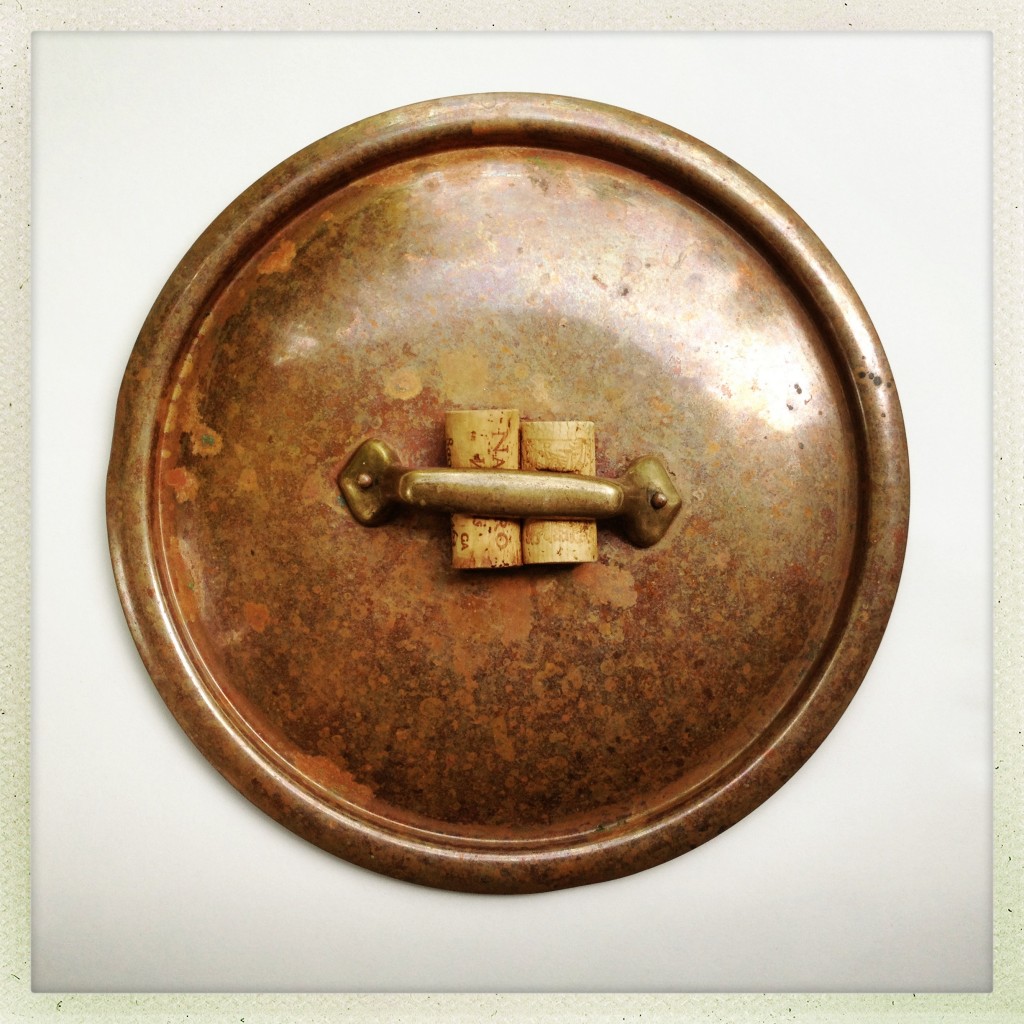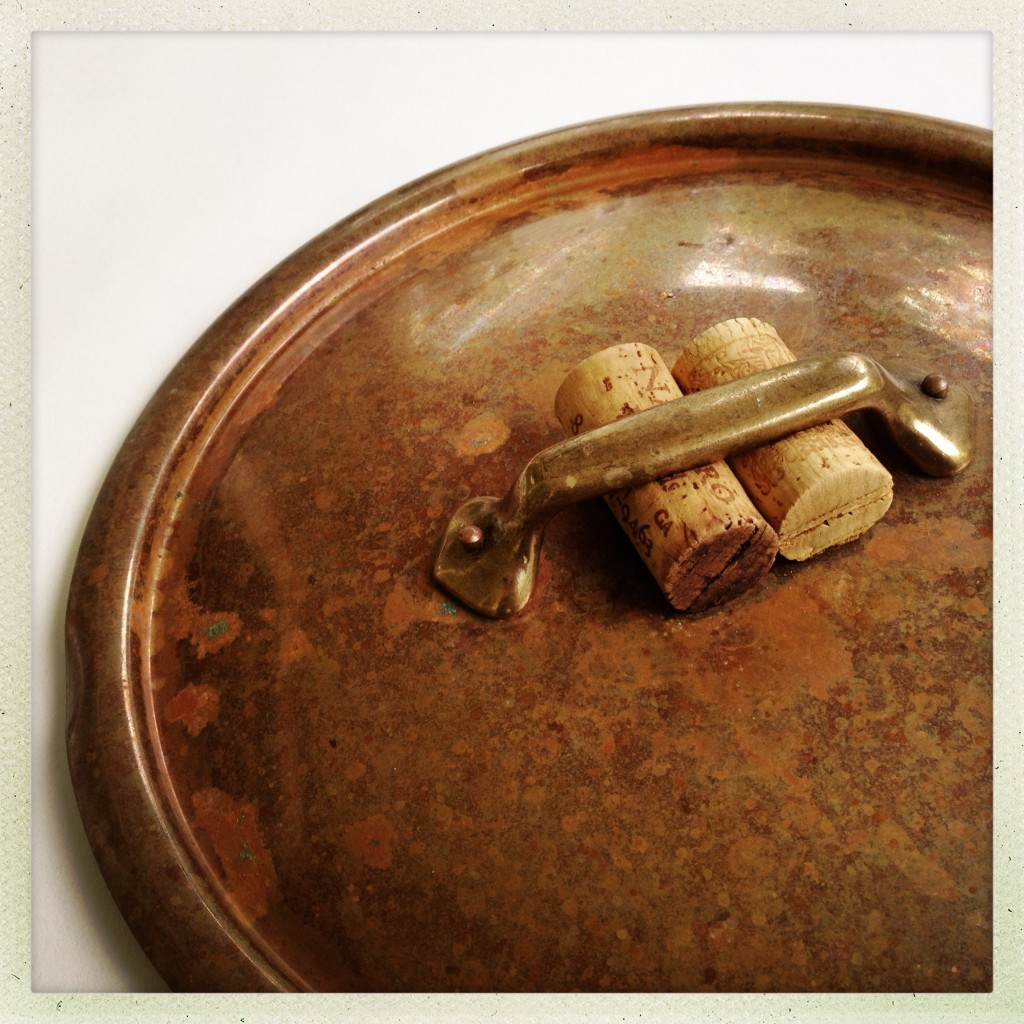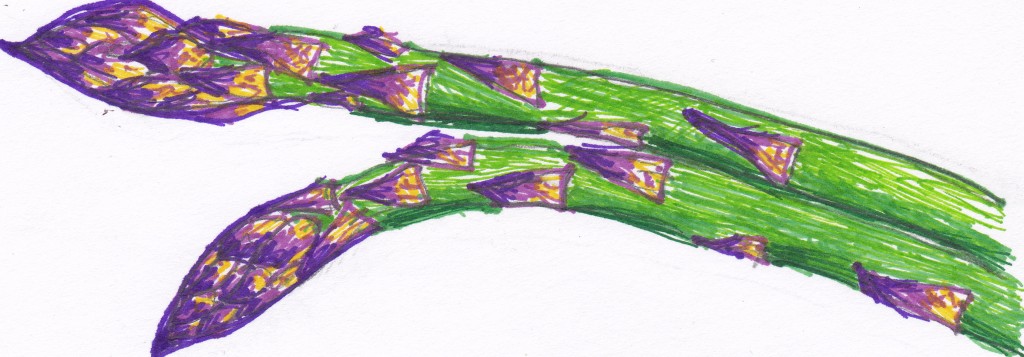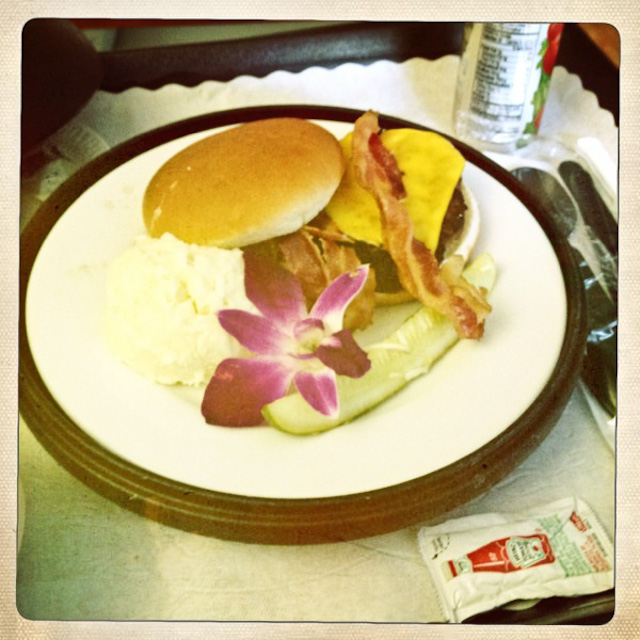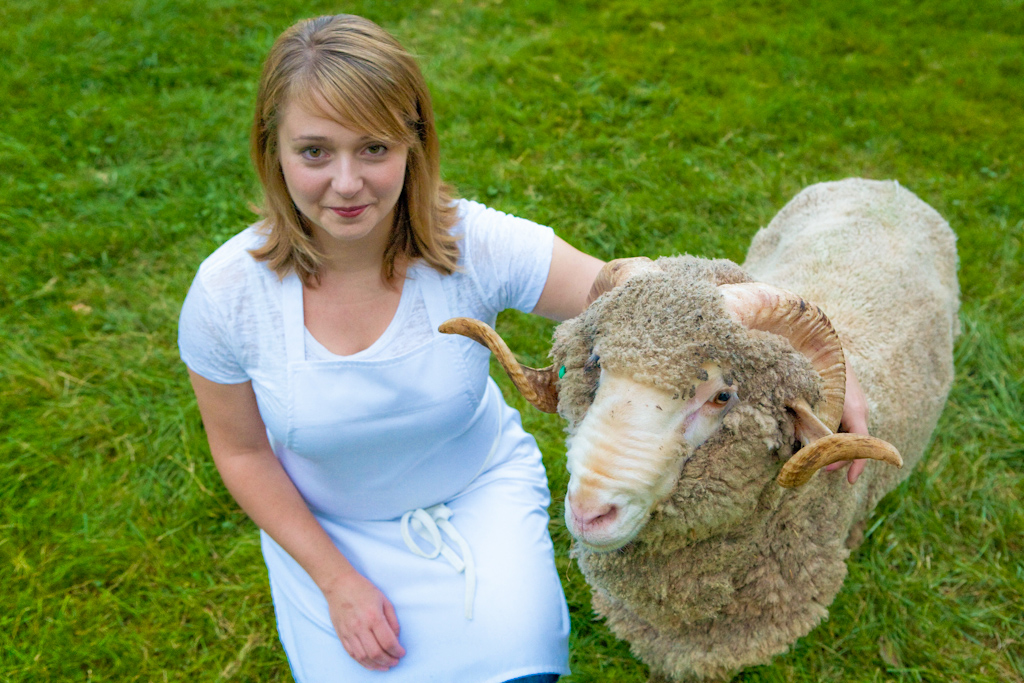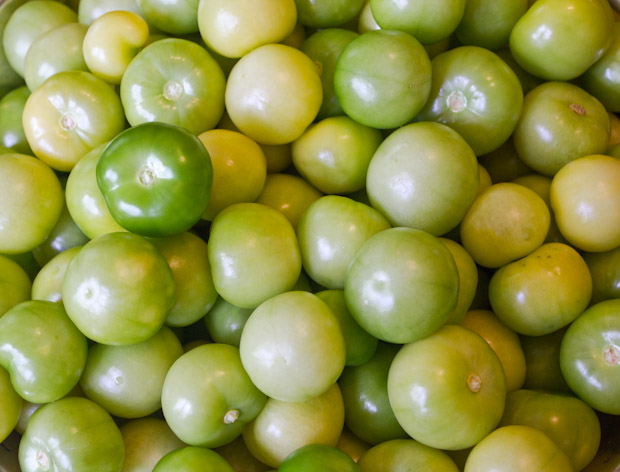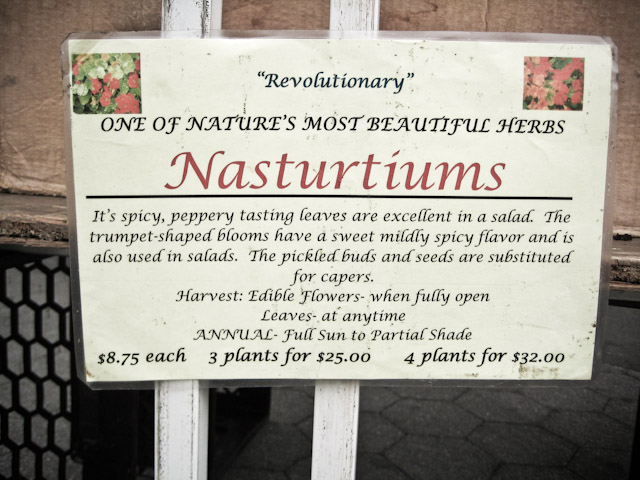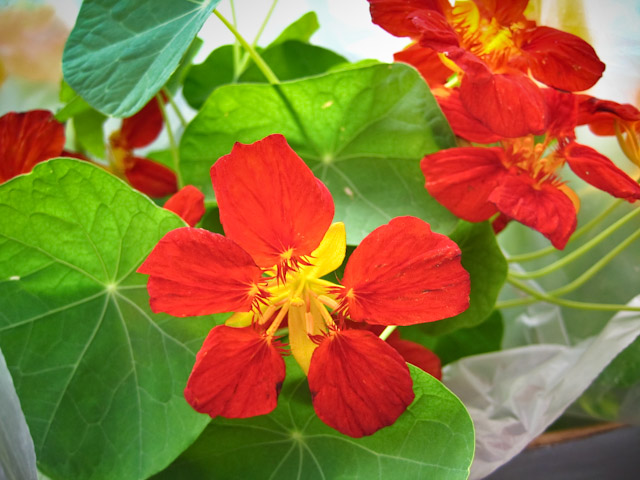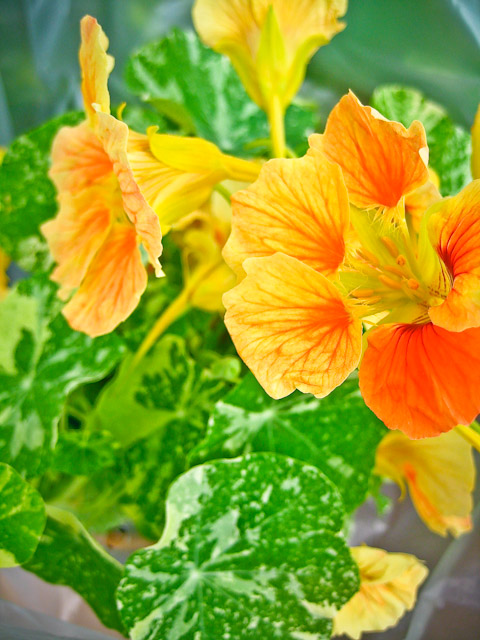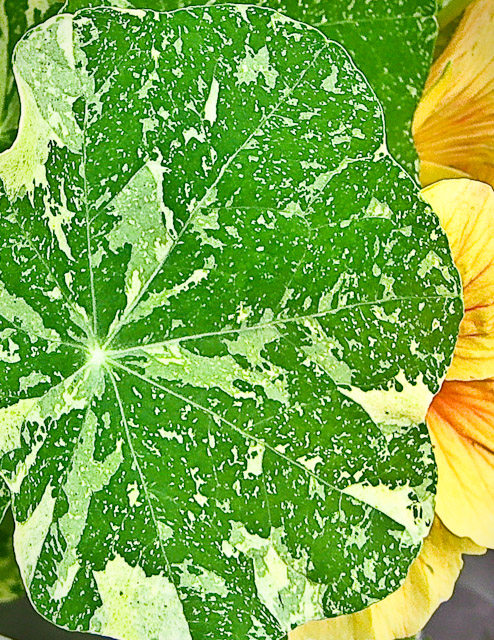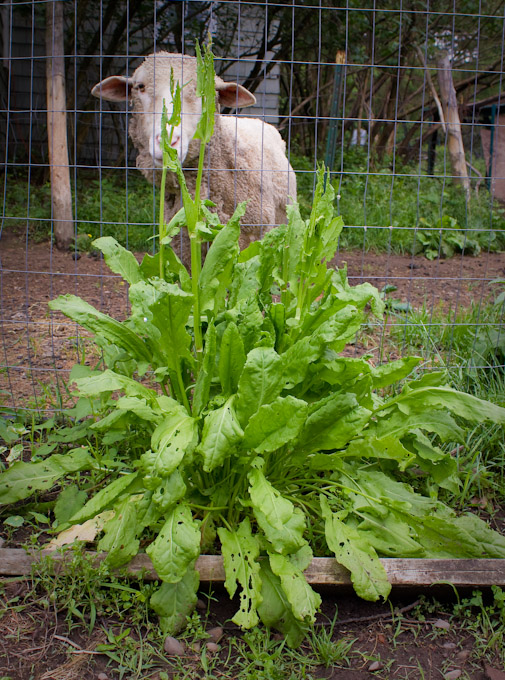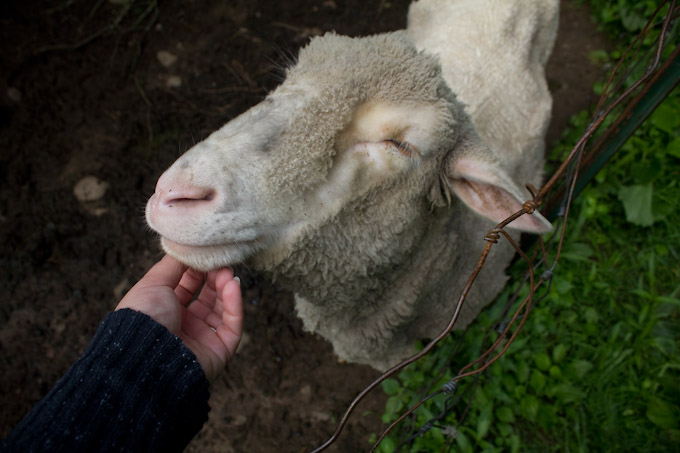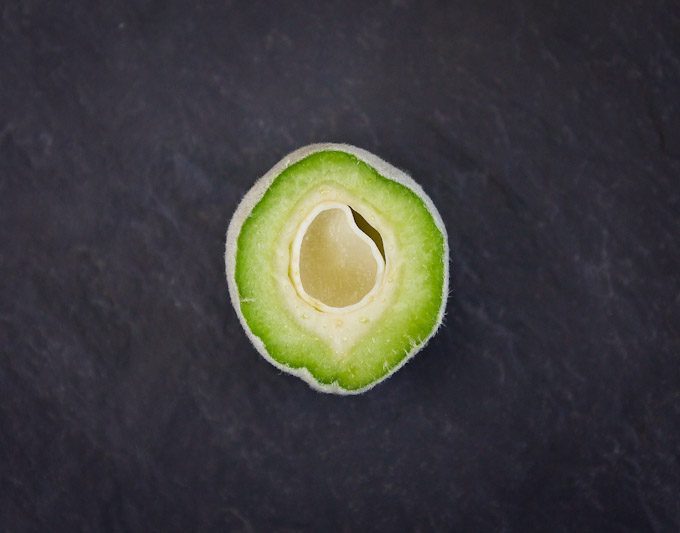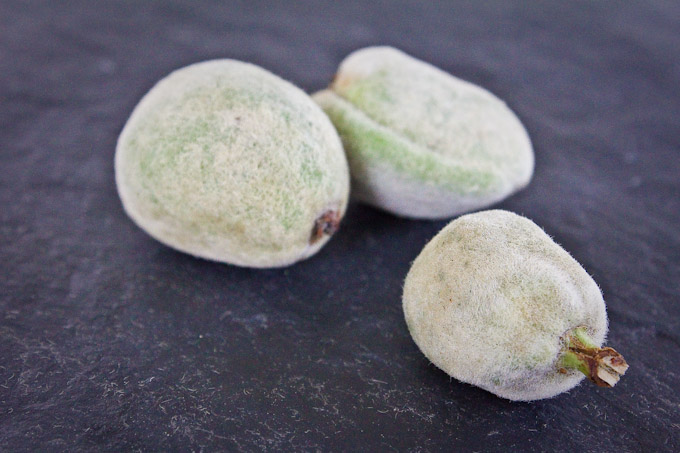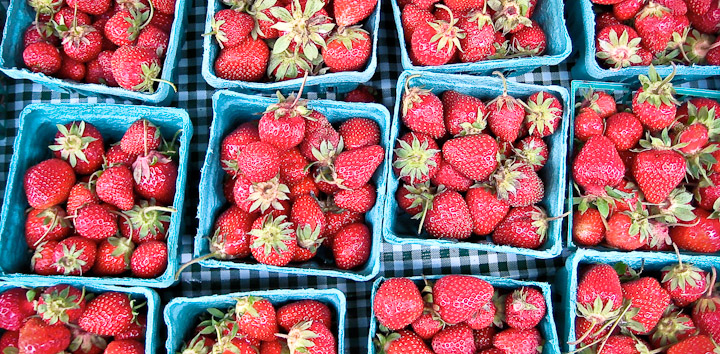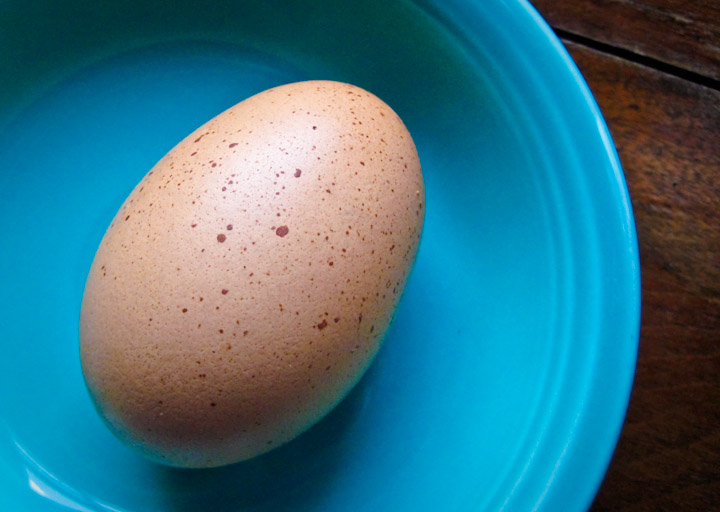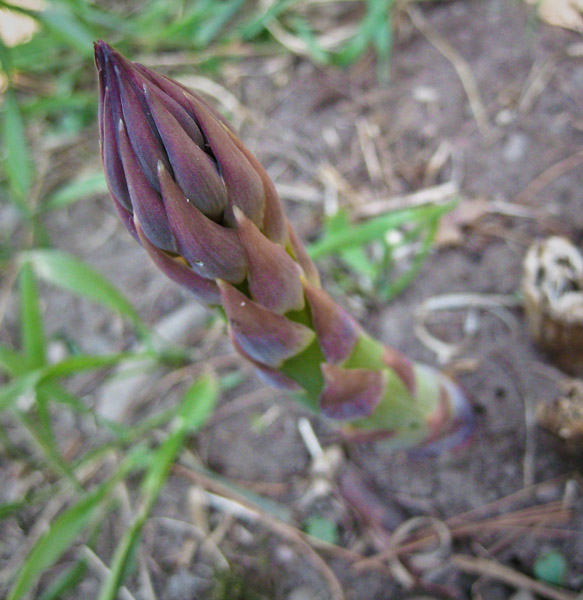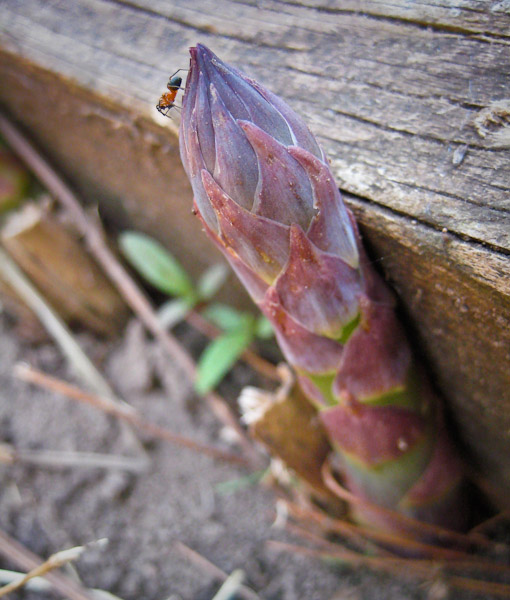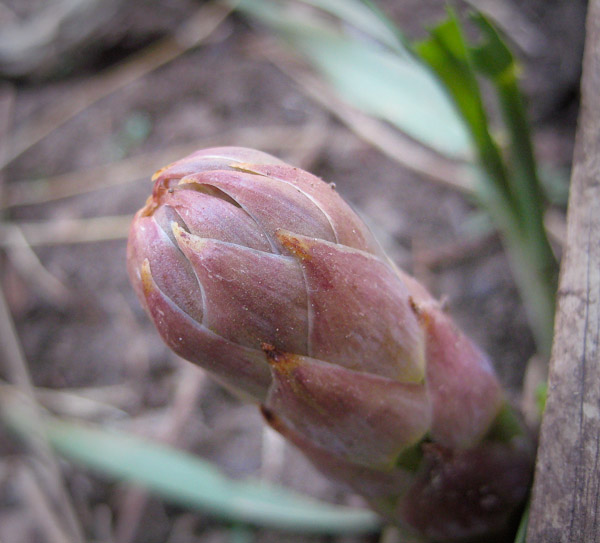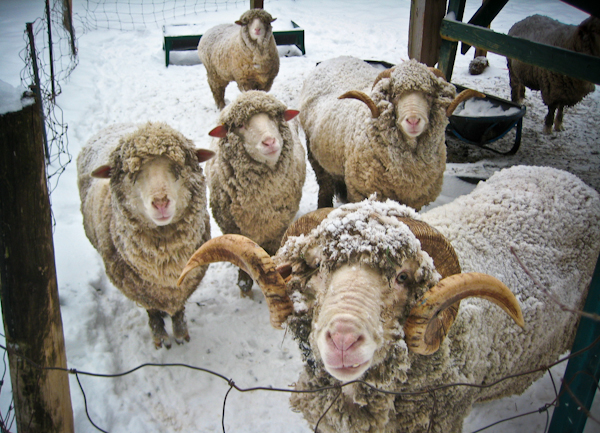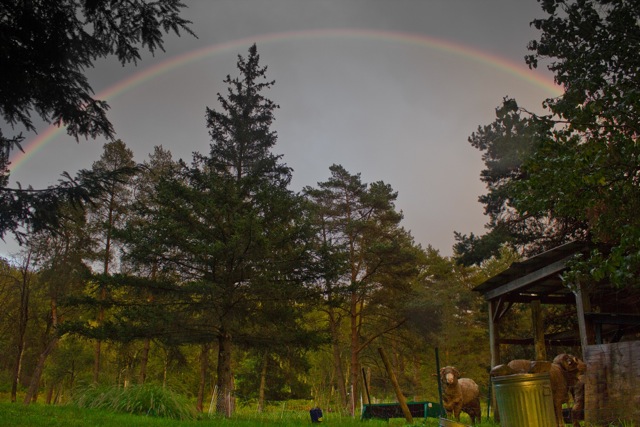Most of our cookware have lids that are completely constructed of metal of some variety. Especially the copper pieces. They are my favorite to cook with, stellar conductors of heat, but OUCH if you grab the lid without thinking. Above is the lid from our prized giant stock pot that forever sits on our stovetop, as it is so darn pretty. A few years ago we were at a friend's for dinner who had the same one, and spotted this genius solution for the scalding handle or the annoyance of constantly searching for a pot holder. Jam two corks from previously enjoyed wine bottles (we happened to be able to dig up a few), under the handle and problem solved. The corks don't conduct any of the heat, and they even stay put through (hand) washing. | ||||||||||||||||
 Matthew Goldfarb and Petra Page-Mann, co-founders of Fruition Seeds. Through the marvelous thing that is this internet, though email, mutual blogs, and a mutual friend's Kickstarter encouragement, I have very recently been put in touch with this wonderful couple, Matthew Goldfarb and Petra Page-Mann, co-founders of Fruition Seeds. Located in the Finger Lakes region of New York State, they are a certified organic, open-pollinated vegetable, herb, flower, grain and cover crop seed company doing something pretty remarkable in a very scary time for our global seed supply. As I've said in recent facebook and twitter posts, I can think of no more worthy Kickstarter campaign (with better pledge rewards) that I have come across. And, I am incredibly excited to know about this seed resource and cannot wait to try their beautiful varieties next spring in our gardens. Below is a great guest post from Petra and Matthew. Though having not yet met them in person, I am so thrilled to have crossed paths with these new friends, couldn't have more respect for what they are doing, and am so happy we all get to be the fortunate beneficiaries of all of their tireless work. (And there are just FIVE DAYS LEFT in their Kickstarter drive. Get over there and get yourself some seeds!) 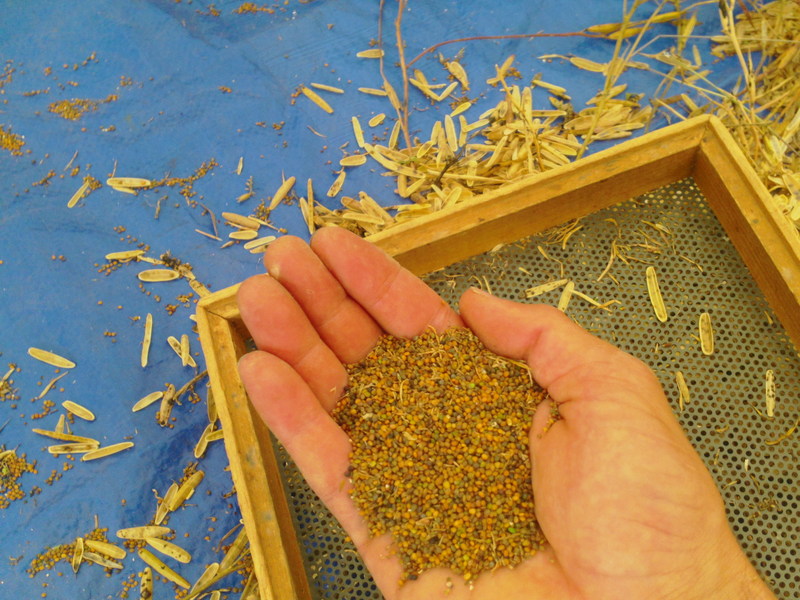 Arugula seed, freshly screened. How does seed saving fit into your understanding of ‘sustainability’? Matthew: The ideas surrounding and daily practice of ‘sustainability’ have long been a part of our lives in the thirty collective years that Petra and I have been farming. Energy, food, transportation, waste, social life: we have not gone a day without considering and acting on what is best for us, our community and our world. Yet we were always uncomfortable with ‘sustainability’ because it assumes the world is static, neglecting an appreciation for shift and adaptation. Petra: Seeds offer the perfect metaphor for what it is that we are truly after: resiliency. Even as climates change, diseases evolve and cultural trends shift, seeds adapt and encode this resilience in the next generation. At Fruition Seeds we select plants for these resilient qualities for our region through only growing open-pollinated varieties that can be saved and shared for generations to come. Why did you start Fruition Seeds? Matthew: Buckminster Fuller observed, “you never change things by fighting the existing reality. To change something, build a new model that makes the existing model obsolete.” (more…) | ||||||||||||||||
Something to do with asparagus right now...(and what I'm having for dinner.)
| ||||||||||||||||||||||
“One of the very nicest things about life is the way we must regularly stop whatever it is we are doing and devote our attention to eating.” - Luciano Pavarotti | ||||||||||||||||
Food stylin'. A dendrobium orchid garnish on my tray of hospital food--my first solid meal after giving birth a few weeks ago. And yes, that is a bacon cheeseburger. Don't judge. It was a very long night. Well, I wouldn't have had a sudden long hiatus of blog posts, particularly through the biggest food holidays of the year, if I didn't have a very good reason. I gave birth to my first child, an astonishingly cute baby boy, in mid-November. Since then, time with both hands free to type and test recipes has been scarce. And I'm so enjoying taking some time to really relish all of these new beginnings. However, I am missing blogging for all of you a great deal, and will be back very shortly. In the meantime, you can also check in with me on twitter (@pitchforkdiary) and facebook (www.facebook.com/pitchforkdiaries). And I have my first (!) food piece in print in the winter issue of the gorgeous Green Door magazine. It is a tutorial on how to make preserved lemons, and this recipe for Pumpkin Tagine. I'd also love to hear any questions you have or what you'd like to see coming up. Please check back soon--great things are coming. Happy 2012! | ||||||||||||||||
"Food is our common language, it's important for people to pay attention to food, it's not so much what we're eating, as where that food comes from; people find money to buy anything they want, but when it comes to food it's their last priority, and it should be their first"
- Alice Waters | ||||||||||||||||
FLUELLEN I peseech you heartily, scurvy, lousy knave, at my desires, and my requests, and my petitions, to eat, look you, this leek: because, look you, you do not love it, nor your affections and your appetites and your digestions doo's not agree with it, I would desire you to eat it. PISTOL Not for Cadwallader and all his goats. FLUELLEN There is one goat for you. Strikes him Will you be so good, scauld knave, as eat it? PISTOL Base Trojan, thou shalt die. FLUELLEN You say very true, scauld knave, when God's will is: I will desire you to live in the mean time, and eat your victuals: come, there is sauce for it. Strikes him You called me yesterday mountain-squire; but I will make you to-day a squire of low degree. I pray you, fall to: if you can mock a leek, you can eat a leek. GOWER Enough, captain: you have astonished him. FLUELLEN I say, I will make him eat some part of my leek, or I will peat his pate four days. Bite, I pray you; it is good for your green wound and your ploody coxcomb. PISTOL Must I bite? FLUELLEN Yes, certainly, and out of doubt and out of question too, and ambiguities. PISTOL By this leek, I will most horribly revenge: I eat and eat, I swear-- FLUELLEN Eat, I pray you: will you have some more sauce to your leek? there is not enough leek to swear by. PISTOL Quiet thy cudgel; thou dost see I eat. FLUELLEN Much good do you, scauld knave, heartily. Nay, pray you, throw none away; the skin is good for your broken coxcomb. When you take occasions to see leeks hereafter, I pray you, mock at 'em; that is all. PISTOL Good. FLUELLEN Ay, leeks is good: hold you, there is a groat to heal your pate. PISTOL Me a groat! FLUELLEN Yes, verily and in truth, you shall take it; or I have another leek in my pocket, which you shall eat. -William Shakespeare, Henry V, act 5, scene i | ||||||||||||||||
"And he gave it for his opinon, that whoever could make two ears of corn, or two blades of grass, to grow upon a spot of ground where only one grew before, would deserve better of mankind, and do essential service to his country, than the whole race of politicians put together."
-Jonathan Swift, Gulliver's Travels | ||||||||||||||||
I know, I know. My recipe posts have been a tad thin for the last two weeks or so. Truth is I've been cheating on you a bit, working with a few incredible food media cohorts.
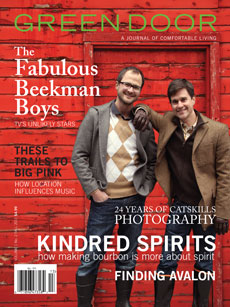 I just wrapped an article for the upcoming winter issue of the gorgeous Green Door Magazine. Green Door is a relatively new magazine published in the Hudson Valley, NY, but with charming rural/urban interest pieces that are a total joy regardless of your locale. It "espouses the benefits of country living in a socially conscious society, while retaining an attachment to the realities of urban life. It is ‘a journal of comfortable living,’ as the magazine profiles artists, residences, food, wine, local farms, events and the evolution of transplanted city-dwellers." A pitchfork diary indeed. I just wrapped an article for the upcoming winter issue of the gorgeous Green Door Magazine. Green Door is a relatively new magazine published in the Hudson Valley, NY, but with charming rural/urban interest pieces that are a total joy regardless of your locale. It "espouses the benefits of country living in a socially conscious society, while retaining an attachment to the realities of urban life. It is ‘a journal of comfortable living,’ as the magazine profiles artists, residences, food, wine, local farms, events and the evolution of transplanted city-dwellers." A pitchfork diary indeed.Keep an eye out for upcoming issues, or subscribe, or follow them on facebook or their blog.  I also had the great honor of getting to be a panelist at my alma matter in Steven Shaw's outstanding food blogging course. I took the course myself a year and a half ago, and well, the rest is history. I also had the great honor of getting to be a panelist at my alma matter in Steven Shaw's outstanding food blogging course. I took the course myself a year and a half ago, and well, the rest is history.Most enjoyable was the chance to meet a bunch of new food bloggers, many of whom are just starting out with their first posts in this course. Sharp and creative, with lots of super innovative ideas and delicious recipes, it was such a pleasure to hear their thoughts and see what they are working on and ideas they are working out. With many of the blogs I look at, I love to go back in the archives and see their very first few posts and photos and get a sense of where it all started. Here are the blogs from this group of new bloggers, all with great things to offer. Catch 'em from the start. Ingredient Studio Frankie Cooks Sweet Tea and Taters The Traveling Gourmand Amusing My Bouche Nibbling Gypsy NY Paladar Eating in Your Underwear High Self of Steam Sweet Kitchen Crumberry Bake Shop Fun Fearless Foodie | ||||||||||||||||
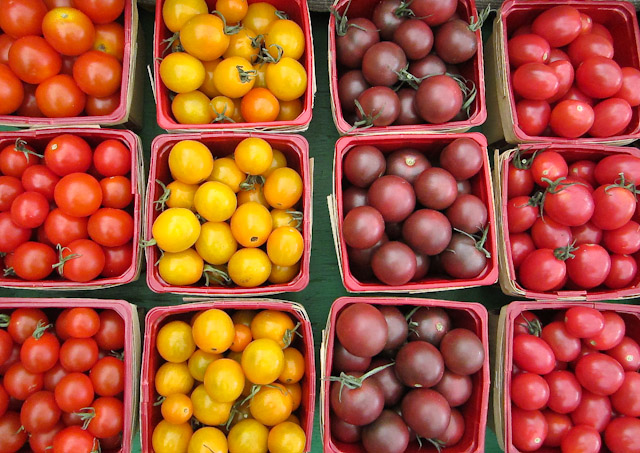  Though disappearing soon, cherry tomatoes are still adorning the tables of the farmers markets, and a few are hanging on to the vines for dear life in our gardens. I am trying to take advantage of them now as much as I can, as I know that too shortly I'll be making deals with the devil to have that flavor available to me in more blustery months. One of my favorite recipes is Roasted Cherry Tomato Vinaigrette, which can also be canned for use later on, and I made sure was on the menu at my wedding. Another is the outrageously delicious Caramelized Cherry Tomato Tarte Tatin, from the New York Times a few years back, that is so good I felt like I was tasting a cherry tomato for the very first time. Seize the moment, and get these juicy gems while you can. | ||||||||||||||||
" To "put by" is an early nineteenth-century way of saying to save something you don't have to use now, against the time when you'll need it...Putting food by is prudence, and it's involvement. It's also a meaningful return to old simplicities and skills. Above all, it is deeply satisfying. We know what is added to food we put by for our families. And we have a direct return for effort--which has be become a luxury in these times of remote and deviously routed forces."
-Janet Greene, in Putting Food By, January 1973. | ||||||||||||||||
How did you possibly live before the quite-brilliant food blog recipe site Gojee.com?? It serves as your online library/concierge/personal assistant/curator to help find new recipes from top food blogs, selected just for you and what you are craving, or better yet, what you have on hand at the moment. Launched a few months ago, today they are adding their second batch of writers and blogs, and I could not be more proud to announce that that includes me and Pitchfork Diaries! It is a tremendous bunch of blogs and bloggers who they work with, many of whom have served as my inspiration and mentors for years, and it is such a thrill to be in their esteemed company. The genius premise allows you to submit ingredients that you are craving or have in the pantry, and they then pull up recipes from a arsenal of diverse and talented food bloggers that fit your criteria, complete with full-screen mouth watering photos. You can even input ingredients you dislike and never want to see included in your searches, and they are happy to oblige. They also have a function where you can link your D'agostino's loyalty card number, (soon to be expanded to other food markets), and they will formulate a list of recipes based on your recent grocery purchases. Again, how did we live without this? Thanks so much to the creative, super sharp, and innovative team over at gojee.com for including Pitchfork Diaries and for the great site!
| ||||||||||||||||
| ||||||||||||||||
"Since traditional pesto genovese consists of nothing more than basil, garlic, nuts, olive oil, salt, and cheese, the quality and variety of the ingredients you choose really matter. When it comes to basil, shop for the youngest herbs you can find, with the smallest, palest leaves. The smell should be aromatic, not licorice-like. If you can't find young basil, soften the bitterness of deep green mature leaves by blanching them in almost boiling water for 30 seconds, then plunge them in an ice bath."
- Elements of Pesto, by Laura Schenone, Saveur magazine, August/September 2011 | ||||||||||||||||
"Before throwing anything away, consider whether it might have a use. For example, save vegetable remains to make soup stock or use them as compost to feed your garden." - the fourth lesson of Mindful Cooking, from 3 Bowls Cookbook, by Seppo Ed Farrey (I'll also add to be mindful of using every last bit of food off your cutting board, and to be intentional about scraping everything out of your mixing bowl and cooking pot. Leaving food behind, or rinsing it down the drain, can throw off the measurements of a recipe, but also all those wasted small spoonfuls add up to a considerable amount of valuable food eventually.) | ||||||||||||||||
| ||||||||||||||||
"I've always believed that the most important people on the planet are the ones who plant the seeds and care for the soil where they are grown"
—Willie Nelson | ||||||||||||||||
"Cardamom is one of the most ethereal aromas."
-Harold McGee, "Thinking About Flavor" lecture, in the Alchemy of Taste and Smell conference, November 2010, Astor Center, NYC | ||||||||||||||||
"I don't think you can be a good cook unless you can appreciate where the ingredients come from, and the only way you can really appreciate that is to get your hands into growing at least some of the food you’re cooking."
- Rick Bayless, Chef, Frontera Grill and Topolobampo restaurants, Cookbook Author, and Host of "Mexico - One Plate at a Time" on PBS | ||||||||||||||||
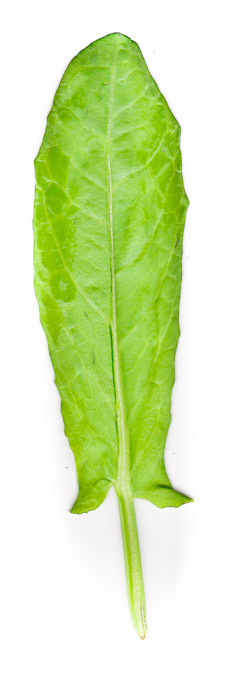 Sorrel (and its many varieties and names: garden sorrel, english sorrel, common sorrel, french sorrel) is showing up now in abundance at farmers markets and in gardens. It is a perennial (it comes back each year) herb, with super tender leaves that pack a ton of vitamins C and A. Sorrel (and its many varieties and names: garden sorrel, english sorrel, common sorrel, french sorrel) is showing up now in abundance at farmers markets and in gardens. It is a perennial (it comes back each year) herb, with super tender leaves that pack a ton of vitamins C and A.It is incredibly easy to grow yourself, in a spot with full sun. We planted a small plant last year, basically ignored it, and this season it has not only returned, but is already 2+ feet tall. The long, oval, slightly pointed, arrow-like leaves are thin, soft and delicate, like a baby lettuce leaf. What is most remarkable about this herb is its decidedly sour flavor. The name Sorrel is derived from the word sour, and is also, with a deliberate nod, the name of the sour-lipped daughter in Noel Coward's Hay Fever. A role I've played and adored. Bright and tart, it is not unlike adding lemon zest to a recipe. The flavor mellows out a good amount when cooked, and is less pronounced in younger leaves. But to get it's full get its full zing, it can definitely be used raw. Sorrel is wonderful added to salads, or pureed raw and frozen to brighten up winter dishes. It is a natural with eggs, potatoes, fish, or pureed in a cream sauce, and can be sauteed like spinach. My first experience cooking with sorrel, and still my favorite, is a Chard and Sorrel Soup found in Deborah Madison's vegetable-bible cookbook Vegetarian Cooking for Everyone Keep an eye out for this leafy green treasure at markets now and throughout the summer. Buy more than you need, and freeze some for when your heavy root vegetable winter month meals need some summery assistance. | ||||||||||||||||
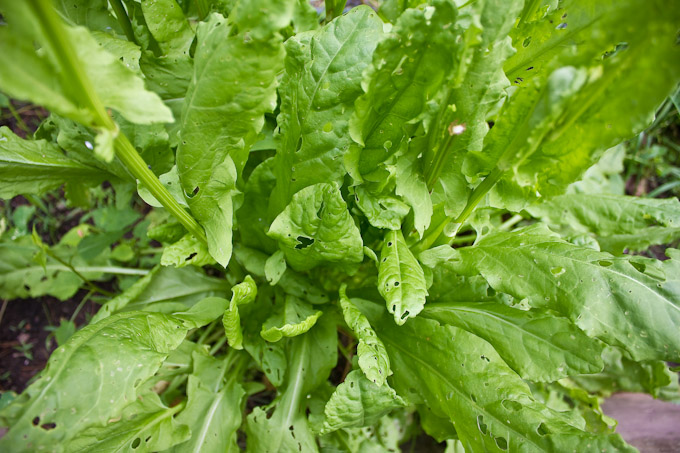 vibrant sorrel thriving in our garden. The sheep love sorrel too. (Good fences make good neighbors.) Chin scratch heaven: Sorrel? Who needs sorrel? | ||||||||||||||||
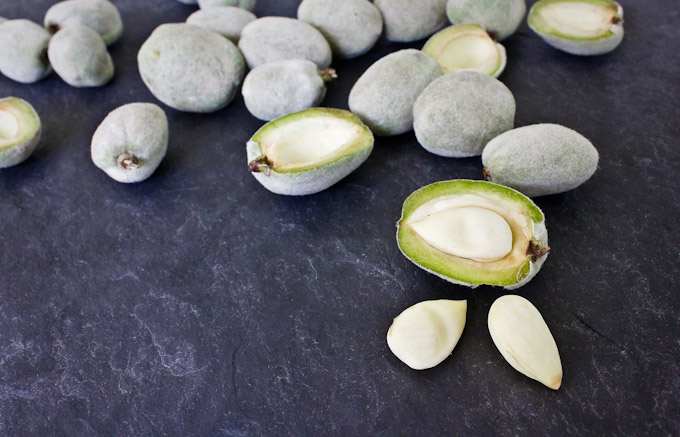 Recently I was in the Batali/Bastianich Italian food megastore Eataly in NYC. Always a recipe-provoking stop, particularly mid-week when not utterly tourist-jammed and you can actually see the counters and food. The variety of food and ingredient offerings is as impressive as the block-wide size of this culinary cathedral. Rarely do I go there and not see something I have never encountered previously. Never have I been able to leave there empty handed. 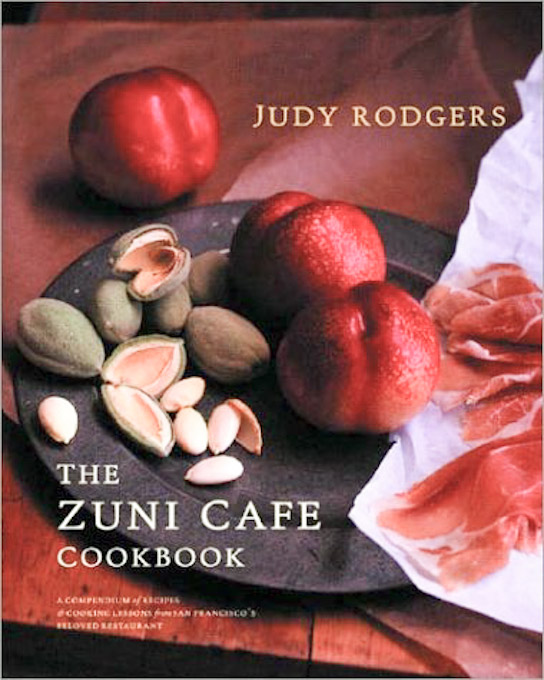 On this balmy day I came across a long basket of fuzzy green almonds. The only other time I've seen them was on the cover of my beloved Zuni Cafe cookbook On this balmy day I came across a long basket of fuzzy green almonds. The only other time I've seen them was on the cover of my beloved Zuni Cafe cookbookSo into my basket went a half pound. After a little investigating, I learned that these green almonds were the unripe fruit of the almond tree, and while green, the outer flesh, and in turn entire fruit, is edible. The green-fuzzy flesh is firm and crisp, much like biting into an unripe peach--of which they are a relative and bear a striking resemblance in this form. The inside almond nut, with which we are much more familiar, was still pale white, soft and jelly-like on the inside. Biting into that was like a sliver of a firm grape, with just the slightest burst of moisture. None of the flavors are particularly strong, but just fresh and green and vital. The outside flesh tastes much like a cross between an unripe peach and a fresh-picked raw green bean. The center jellied nut was slightly sweeter with just a hint of sour, but again, nothing overpowering. But the combination of textures and herbaceous qualities I found thrilling and unable to put down. Green almonds are popular in many Middle Eastern cuisines, simply dipped lightly in a dish of salt as they are eaten. This way was my favorite. Like many of their green baby spring cohorts, these green almonds are only available for a brief eight week season from mid-April to mid-June. I was a little late to the party too this year, but keep your eyes out this week and definitely snap some up if you come across them. Put them on your radar for next year regardless. | ||||||||||||||||
"Better than any argument is to rise at dawn and pick dew-wet red berries in a cup." — Wendell Berry | ||||||||||||||||
Here are a few outrageously delicious recipes that I keep returning to, and plan to return to again this weekend. Tried (and in some cases, tried and tried and tried) and true. Try them yourself and let me know what you think. Happy weekend! Kathleen Claiborne's Hot Cakes: I first heard of these in a New York Times article about the weekend activities of Paul LeClerc, the president of the New York Public Library. The pancake recipe is from Craig Claiborne's mother. Mr. LeClerc said they were the "best pancakes I've ever had in my life", and I absolutely agree. A staple on Sunday mornings in our house. David Chang's Momofuku Napa Cabbage Kimchi: I could not put down the Momofuku cookbook Jacques Torres' Chocolate Chip Cookies: Chef Torres also happens to be one of the deans of where I went to culinary school, so unwittingly it will be an FCI weekend all around. I made a big batch of these earlier this week after my husband sounded particularly frazzled on the phone during a work day, with the intension of not only having the house smell like warm cookies when he got home (um, when did I become June Cleaver?), but also to bring a significant portion to our awesome neighbors/sheep-sitters across the street. Well, let's just say they are so good that I am not only making them for a second time in one week, but they have yet to make it across the street. | ||||||||||||||||
"Crustacean flesh develops delicious aromas and flavors simply by spending a few minutes in boiling water. Most meats can't achieve such high levels of smell and taste without the application of flame or intense heat, and there are a couple of reasons for this. Crustaceans counteract the osmotic pressure of saltwater with an especially tasty and concentrated array of amino acids, particularly the same sweet-tasting glycine found in mackerel. Crustacean flesh also contains a high concentration of sugars. With the application of a little heat, these amino acids and sugars react with each other, creating the same sort of delicious and aromatic molecules produced in the meat of mammals and most fish, only at much higher temperatures."
- Trevor Corson, The Zen of Fish: The Story of Sushi, from Samurai to Supermarket | ||||||||||||||||
"If you don't start with something beautiful, you will not end with something great. Seek out the best ingredients you can."
- Penny De Los Santos, food photographer extraordinaire CreativeLIVE seminar, May 13, 2011 | ||||||||||||||||
| ||||||||||||||||
"Good bread is the most fundamentally satisfying of all foods; and good bread with fresh butter, the greatest of feasts."
- James Beard | ||||||||||||||||
"As for the people who do chemical cooking, all I can say is, Stop it. The difference between homemade whipped cream, for example, and Cool Whip is enormous, what with all the preservatives and hydrogenated oils they put in it. You don’t know what’s in those things, you can’t even pronounce the ingredients, and you’re spending so much more for somebody to package and distribute it. There’s no reason to buy that stuff. Sometimes I make my own mayonnaise, sometimes I buy it. But the taste is never there. And my overriding choice is taste."
- Julee Rosso-Miller, coauthor of the Silver Palate cookbooks | ||||||||||||||||
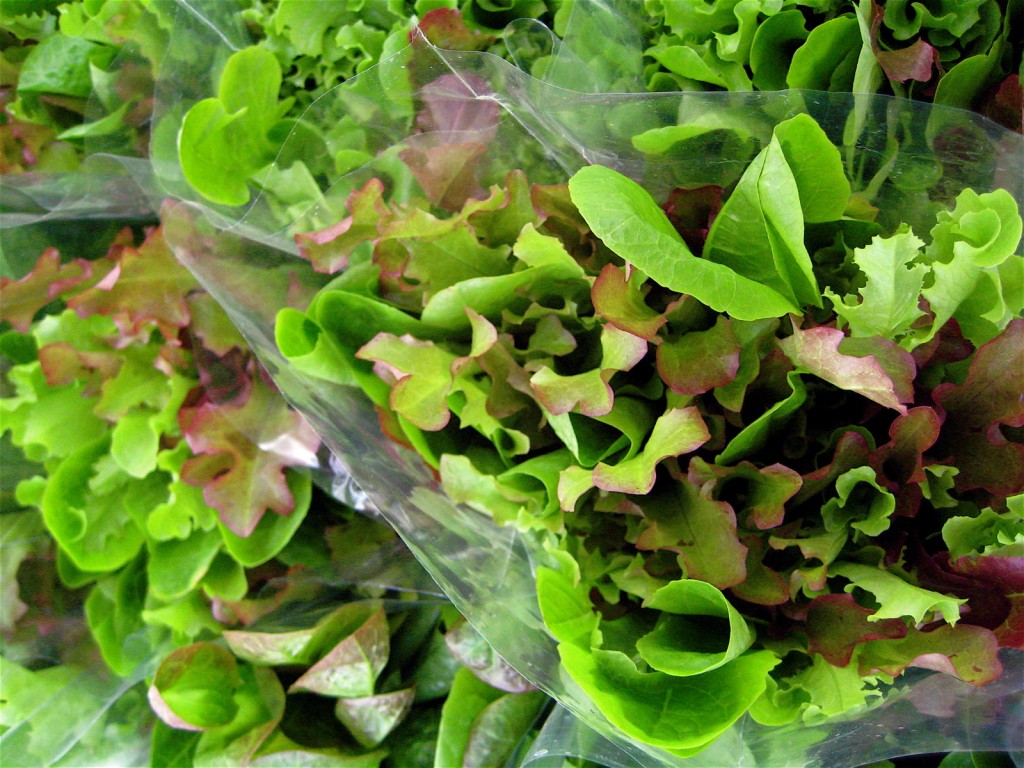 Some of the earliest cold-resistant crops available in the spring (or earlier if you have a farmer who has a fancy-schmancy greenhouse), fresh, vibrant salad greens are popping up now at farmers' markets. That first, crisp, lightly-dressed bowlful always feels like such an extraordinary luxury after months of pots of piping-hot long-simmered root vegetables and squash. These leaves tend to be delicate, and depending on the variety, sometimes a bit costly. So here are a few tips to help insure you get every last bite for your buck. Washing Your lettuces and spinach, particularly from a farm stand, can often have a fair amount of dirt on the leaves and stems. Place all the greens in a large bowl and fill with cold water. Agitate the leaves gently with your hand, and allow the leaves to float up and the dirt to sink down. Carefully skim the greens off the top of the water, leaving the dirt behind. Repeat a few times, if necessary. Storing After cleaning, dry your greens thoroughly. I think a salad spinner Blow a little breath of air into the bag before sealing tight. The carbon dioxide from your breath helps to slow down the deterioration of the leaves, and the extra padding of air will keep them from getting crushed in the fridge. Depending on the type of green, the leaves should be good for a week or two stored like this, but ideally use them much sooner for optimal flavor and nutrients. And Refresh... If your leaves emerge from storage and look a little less than lively, you can refresh them some and add a little crispness back. Fill a large bowl with very cold water. Place leaves in the water and soak for 5-10 minutes to basically rehydrate. Dry thoroughly, and either serve immediately or chill in the refrigerator for a couple of hours until ready. This also works great to get a few extra days out of fresh herbs, or for greens picked from your garden in warmer weather, that seem to wilt by the time they make it to the house. Here's to many happy salad days in the months ahead. | ||||||||||||||||
 The first inch and a half of Victoria rhubarb poking up from the muddy March ground. Pies and jams to follow. | ||||||||||||||||
"In the spring, at the end of the day, you should smell like dirt." -Margaret Atwood | ||||||||||||||||
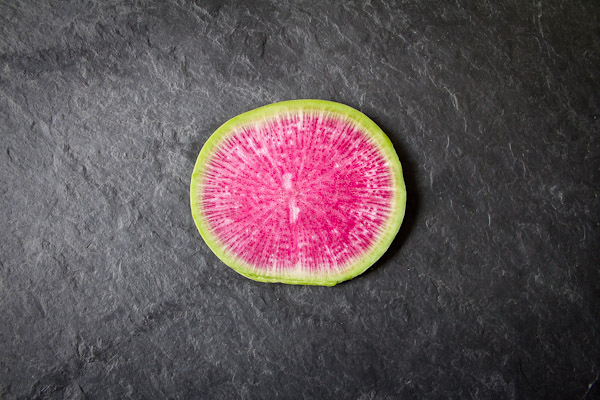 At the Union Square Greenmarket, this past Saturday in Manhattan, I came across giant, stunning Watermelon Radishes. A relative of the Daikon, it is also called Chinese Red Meat, Beauty Heart, and Rose Heart. This is one of the most mild radishes (which, incidentally was the one food I wouldn't touch as a child), with just a slight peppery bite, along with some sweetness and a lot of crunch. But the colors are the real standout here. Off white to lime green on the outside, giving way to brilliant magenta, flecked with tie-dye-reminiscent streaks of white when cut open. Jaw droppingly beautiful on the plate. We have somewhat successfully grown these in our garden the last two summers, but have never had them get quite so big. From some further research I have learned that this variety of radish actually does the best when planted in cooler weather, growing through the winter--which most likely accounts for its sweetness. The ones I found this weekend were nearly four inches in diameter, and about six inches long. But ours at home, grown over the summer in much warmer months, did get to be about twice the size of a golf ball, and still as gorgeous. Due to their unimposing flavor, these can be added to a large variety of dishes, particularly when you want an impressive pop of color. Slice them thin and add to a salad, cut into matchsticks for an extra hue on a crudite plate, lightly pickle to finish off an asian noodle dish, or my favorite, a slice of crusty baguette slathered with really good butter, topped with radish slices and a sprinkling of crunch sea salt. This heirloom radish has gained a lot of popularity in the past few years and is much easier to find as a result. Keep an eye out for the next few weeks at your farmer's markets, or grow some yourself this summer. 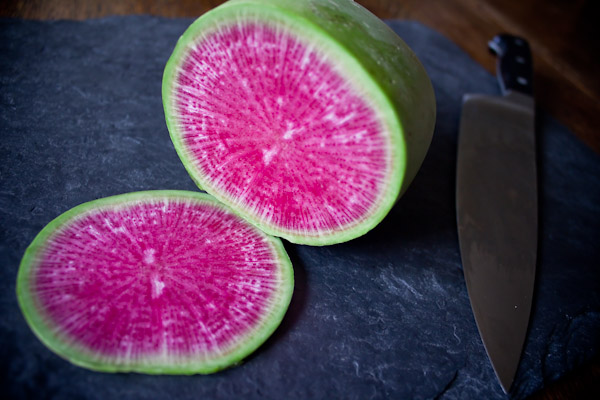 | ||||||||||||||||
"I peered into the pots. Irish stew. A nourishing and economical dish, if a little indigestible. All honour to the land it has brought before the world."
-from Malloy, by Samuel Beckett | ||||||||||||||||
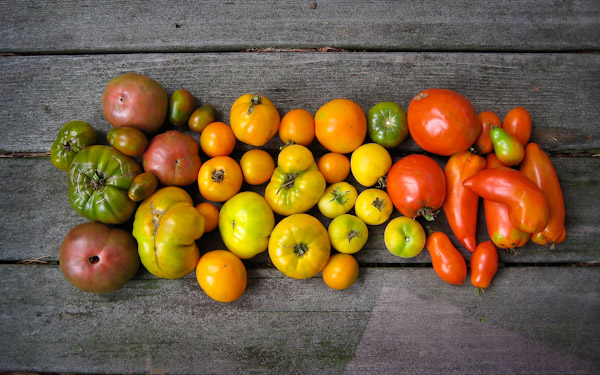 Despite the fact that I haven't seen but a mere patch of ground at our home since prior to Christmas, despite the fact that we still have a foot of snow almost everywhere I look, despite the fact that just looking at flip flops gives me chills, the eternal optimist in me spent the balance of the weekend ordering thousands of heirloom vegetable seeds for this year's crop at our little micro farm. Ideally, if the sun and rain cooperate, (and the sheep don't bust through the fence and help themselves to beds upon beds of gorgeous heirloom kale, leeks, peppers, brussels sprouts, beets, salad greens, and herbs, as happened briefly on one unfortunate day in October), those seeds and their resulting crop will then become a huge percentage of our food for the coming year, and many of the ingredients that I will cook for you here. If you are bitten by the promise of dirt under your fingernails and eating within a five minute radius bug too, here are a few of my best resources for heirloom seeds and plants. Each offer a mind-bloggling assortment of vegetables, fruit, and herbs. They also fiercely protect seeds of endangered heirloom varieties so generations to come will have a vast diversity of produce available as well. (more…) | ||||||||||||||||
 Fernando, who turned two on Valentine's Day, anxiously awaiting some signs of grass out in the pasture. | ||||||||||||||||
"A man taking basil from a woman will love her always."
-Sir Thomas Moore | ||||||||||||||||
| ||||||||||||||||
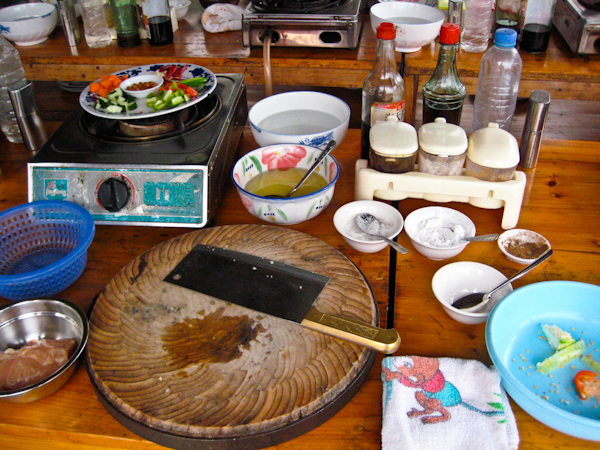 my station at the Cloud 9 Cooking School in Yangshuo, China. The Chinese New Year, the Year of the Rabbit, begins its fifteen day celebration this Thursday, February 3rd. In observance, I'll be cooking lots of chinese dishes this week--many of which I learned during my three-week honeymoon in China three years ago. But to start off, below are some of my most loved Chinese cookbooks. They contain particularly wonderful recipes, photography, and an abundance of basic information on the cuisine itself to help you start to get a grasp of "its most basic rules of grammar." The Breath of a Wok by Grace Young Chinese Village Cookbook: A Practical Guide to Cantonese Country Cooking by Rhoda Yee Land of Plenty: A Treasury of Authentic Sichuan Cooking by Fuchsia Dunlop (I also adored her memoir, Shark's Fin and Sichuan Pepper: A Sweet-Sour Memoir of Eating in China My China by Kylie Kwong Chinese Peoples Cookbook by Mai Leung The Asian Grandmothers Cookbook: Home Cooking from Asian American Kitchens by Pat Tanumihardja  | ||||||||||||||||
"Learning another cuisine is like learning a language. In the beginning, you know nothing about its most basic rules of grammar. You experience it as a flood of words, or dishes, without system or structure. When I first went to China, I was already fluent in the language of basic French cookery. I could make a roux, mayonnaise, hollandaise, vinaigrette, pâtes sucrée or choux. I knew how to sauté ingredients at the start of a stew to make them more delicious, and I could often identify the seasonings and techniques that had been used in a finished dish. And so, in a sense, following a new French recipe was easy, it was just a matter of assembling it from the basic building blocks, the rudimentary culinary processes. The elements themselves were rarely new, however unfamiliar their combination. Even without a recipe, I could look at an ingredient and think of several ways of cooking it. But with Chinese cookery I hadn't a clue."
-Fuchsia Dunlop, Shark's Fin and Sichuan Pepper: A Sweet-Sour Memoir of Eating in China | ||||||||||||||||
"To me, the farmers and producers who bring us wonderful foods are heroic. Whatever they grow, I want to eat: they inspire me to crave variety. Yet I have found that too many Americans have narrow taste horizons when it comes to trying new foods.
Most of us have expanded our taste horizons at least somewhat over the course of a life. But too many people reach a point, eventually, where they settle into a sensory routine: they like a few things, and they don't feel the need to acquire new tastes. This, to me, is a recipe for an unrewarding culinary life, or at least one that is less rewarding than it could be. And from a societal standpoint, it also guarantees boring restaurants that exhibit an alarming degree of sameness. It is my hope, however, that by learning more about the origins of food we will all open our minds a bit more and look to broader culinary horizons. Try a taste of something you don't know or think you don't like, then try it again." - Steven A. Shaw, Turning the Tables: The Insider's Guide to Eating Out | ||||||||||||||||
"A truly good meal depends on a cavalcade of sound judgments, many of which occur well before you lift a knife. When you decide what to cook, you are deciding whether a meal can be really good or not. If you choose to do a dish you can't get good ingredients for, one you are completely unfamiliar with, or one you don't have the time or proper equipment to prepare, you may be setting the stage for a mediocre meal that will be no fun to produce. Even if you have made a dish before, or at least eaten a delicious version of it, and you have the right equipment, the best recipe can only "doll up" mediocre product. The process of deciding what to cook should always begin with deciding where to shop and what to buy (or if you are lucky, what to harvest). Only then should you settle on the preparation, which should suit the qualities of those ingredients, as well as your experience, time frame, and equipment. I add a premium for choosing a dish that suits the weather. To assess and balance these things well is no mean accomplishment, and a good sense of what to buy and how to use it is not developed overnight. Such skills are, however, a pleasure to acquire."
-Judy Rogers, The Zuni Cafe Cookbook | ||||||||||||||||
| ||||||||||||||||
My besty from graduate school, Lindsay Campbell, is the host of Daybreak, a super sharp new daily web show on aol.com. In a recent episode, Michelin star winner and new Iron Chef, Marc Forgione makes her a breakfast of sriracha chili lobster with fresh farm scrambled eggs. Yum.
You’re watching Daybreak:Iron Chef Surprise. See the Web's top videos on AOL Video | ||||||||||||||||
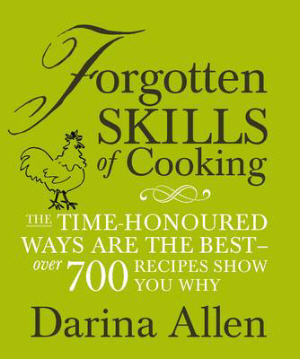 Here are a few of my favorite cookbooks ever. And more than that, they are also my favorite cookbooks to give as gifts. Each are beautiful to just read and admire the artwork and photos, but also offer unique information, recipes, instruction or skills, that sets them apart from the dozens and dozens and dozens I have on my shelves. Here are a few of my favorite cookbooks ever. And more than that, they are also my favorite cookbooks to give as gifts. Each are beautiful to just read and admire the artwork and photos, but also offer unique information, recipes, instruction or skills, that sets them apart from the dozens and dozens and dozens I have on my shelves.Forgotten Skills of Cooking: The Time-Honored Ways are the Best, by Darina Allen Stir by Barbara Lunch Inspired by Ingredients, by Bill Telepan The Flavor Bible, by Karen Page and Andrew Dornenburg The Fundamental Techniques of Classic Cuisine, from the French Culinary Institute Artisan Bread in Five Minutes a Day, by Jeff Hertzberg MD and Zoe Francois | ||||||||||||||||
 Two winters ago I was feeding our sheep one afternoon. As I tore off a big section of a hay bale, I found a long piece of plastic curling ribbon tangled in the stems of the hay with which I was just about to feed my wooly children. I assumed it had been attached to something like a helium balloon, set free to float up to the sky, popped over our hay farmer's field, and then got swept up and included during haying season. I realized that this probably happens all the time, that ribbon was never going to breakdown, and I got a little sick thinking about the pounds and pounds of plastic generated each year for bows that are admired for five seconds and then tossed in the trash. Two winters ago I was feeding our sheep one afternoon. As I tore off a big section of a hay bale, I found a long piece of plastic curling ribbon tangled in the stems of the hay with which I was just about to feed my wooly children. I assumed it had been attached to something like a helium balloon, set free to float up to the sky, popped over our hay farmer's field, and then got swept up and included during haying season. I realized that this probably happens all the time, that ribbon was never going to breakdown, and I got a little sick thinking about the pounds and pounds of plastic generated each year for bows that are admired for five seconds and then tossed in the trash.Despite the fact that I am definitely a sucker for a gorgeously wrapped present, I haven't bought any non-biodegradable gift packaging since. So for times when I needed wrap just slightly classier than the funny pages, I did a lengthy search, and found this great packaging company, Nashville Wraps, who carry a huge amount of eco-friendly, recycled material, reasonably priced gift packaging. They also have a big section of Food Packaging for all of your edible homemade gifts, including these great 100% recycled cardboard cupcake holder inserts for their bakery boxes. I love this company, and everything I have used from them has been plentiful and gorgeous. Check them out. The sheep thank you. | ||||||||||||||||
 Last winter I took a phenomenal six session course on food blogging at the International Culinary Center, which is the parent organization that also houses the French Culinary Institute, where I got my culinary degree. The course is taught by pioneer food blogger, Steven Shaw, who in addition to author and James Beard Award-winning food critic, is the founder of the outrageously successful food mega-blog/literary journal/online community eGullet.org. This man knows his stuff. Last winter I took a phenomenal six session course on food blogging at the International Culinary Center, which is the parent organization that also houses the French Culinary Institute, where I got my culinary degree. The course is taught by pioneer food blogger, Steven Shaw, who in addition to author and James Beard Award-winning food critic, is the founder of the outrageously successful food mega-blog/literary journal/online community eGullet.org. This man knows his stuff.The course far exceeded my expectations in every regard. It is set up beautifully, with constant communication from Steven, and you will be up and running with your own blog in a matter of days. You are masterfully navigated through the mechanics, ethics, branding, and marketability of the over-saturated blogosphere, with even food photography and design covered. Steven has also made good on his promise of a "lifetime membership" of access to him long after the course is over. An invaluable resource. The next session starts on November 1st. If this is something you have thought about, I can't recommend it enough. It will put you far ahead of the game, with treasured advice stemming from years of experience, and will be exactly the kick in the pants you need to get that idea from head to keyboard. Other bloggers, and their blogs, that started with Steven: What Would Cathy Eat: Heart-Healthy Food with Attitude. Reubenography: Exploring the jewish deli through it's bastard son. A Thirsty Spirit Hungry Sofia Lickin' It: A badass ice cream blog. [caption id="attachment_732" align="alignnone" width="600" caption="Food photography workshop with guest speaker, Melissa Hom, food photographer for New York Magazine."] 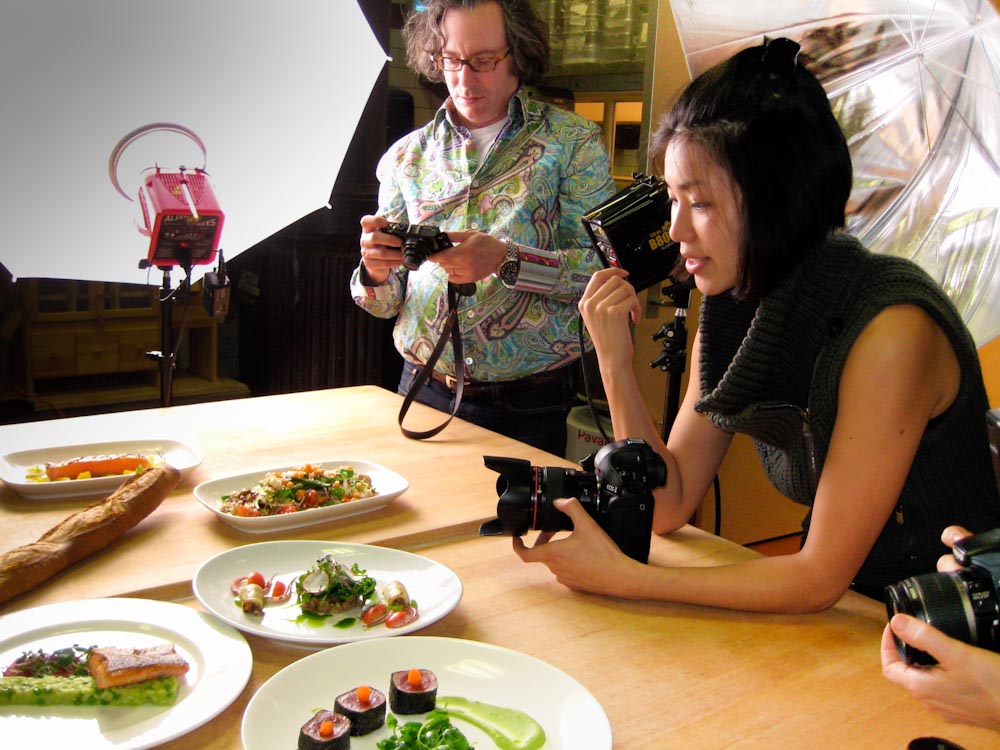 [/caption] [/caption] | ||||||||||||||||
| ||||||||||||||||
I just realized that this summer it has already been two years since we were given two of our most affectionate sheep, Blanche and Stella, by our friend and farmer, Eugene Wyatt, of Catskill Merino Sheep Farm. We still think of them as the new babies of our bunch. They were rejected by their mothers when born, so were "bottle babies" and good ones for us to take to a new home and flock. We had to think fast when we got the call that we could come pick them up---finding a printer box in the attic that would safely transport them home.
Here is a short video I made at the time, announcing our new additions to friends and family. The time has passed so quickly. [caption id="attachment_87" align="alignnone" width="620" caption="Blanche & Stella"]  [/caption] [/caption] | ||||||||||||||||
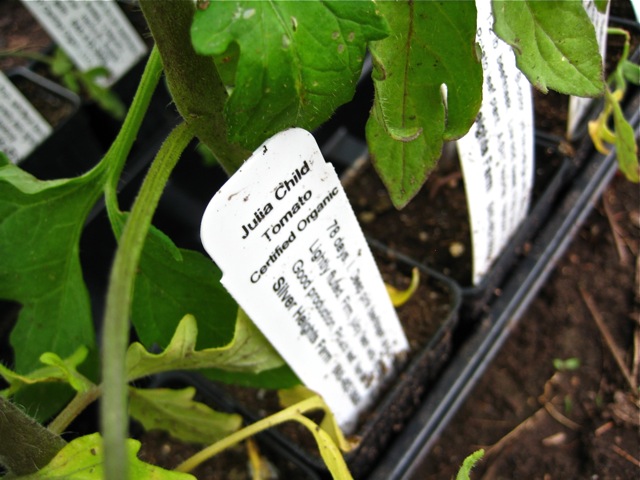 So I too am now writing the "so sorry readers I have left you for weeks on end without hearing from me" blog post that I swore I would never have to write. As a farmer friend said to me, when he asked if we had eachother's contact information, and I reminded him we are friends on Facebook, "oh, well, I'm not inside much." Turns out growing 3000+ square feet of heirloom vegetables with just two people and a dog, keeps you from having time to blog on a regular basis. But I'm back, with a brand new URL, and so excited to share what's going on with us in this most bountiful of seasons. | ||||||||||||||||
The Brooklyn Grange is planting a 40,000 square foot vegetable farm on a rooftop in Queens.
[vodpod id=Video.3671422&w=425&h=350&fv=] I heard about this project initially when taking a pizza class a couple of months back with guys from Roberta's and Pulino's. They mentioned that seedlings were planted, and the Brooklyn Grange team was close to securing a rooftop. The plan is to raise an acre of organic vegetables, create a green space smack in the middle of the city, have a neighborhood farm stand, and supply area restaurants with the most local food they could imagine (delivering on bikes whenever possible!). The group is in the final week of their Kickstarter fund raising campaign. They have just under 25% of their goal left to raise. If you are not familiar with Kickstarter--it is a site where you can donate as little as $1 to a project of your choice, but unless the goal is met by the deadline, the group won't get any of the money pledged. Take a peek, if anything just to learn a lot more about this important, innovative, and delicious project. | ||||||||||||||||
It is that time of year.
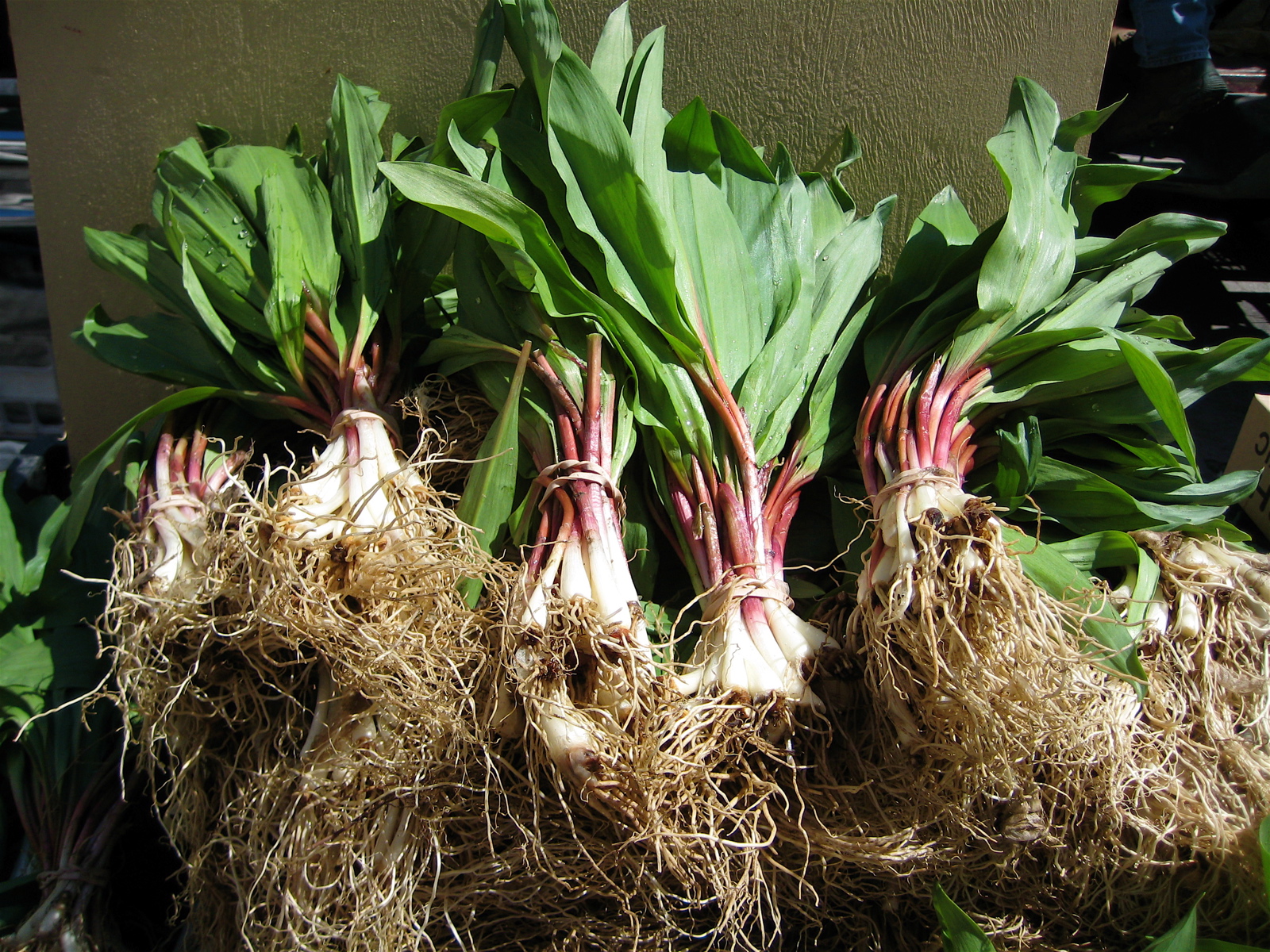 The ramps have arrived. Ramps are wild leeks, and belong to the same genus as onions, garlic and chives. Their flavor is a wild and woodsy combination of the three. You can eat the entire plant, the bulb, stalk, and leaves, and can use them in recipes where you'd use garlic, onions, leeks, or scallions. They are native to North America, and thrive in damp woodlands. They are one of the first splashes of green in the woods, and an unmistakable sign that spring has finally decided to come to the party. (here is one growing in our yard--that I had planted from a few extra I had bought at the farmer's market two seasons ago). 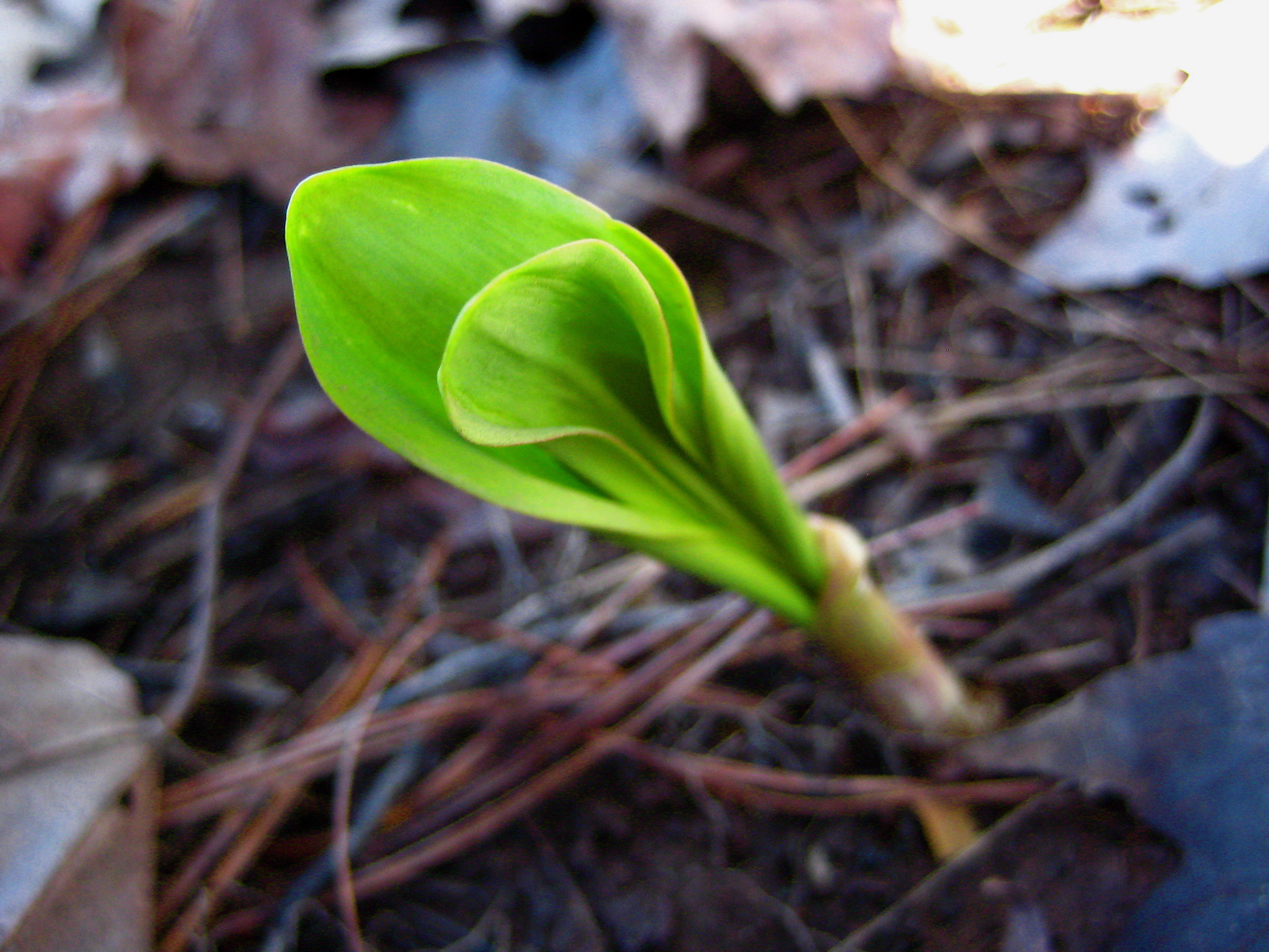 To make them even more of a produce rock star, they are only around for about a month, after which the flavor grows too aggressive. During that time, these slender green devils send the culinary world into a bit of a frenzy. In Appalachia there are many community-wide festivals devoted solely to ramps. In New York City, it's tough to walk into a restaurant in April and not find at least one ramp special on the menu. At Rick Bishop's Mountain Sweet Berry Farm stand in Union Square's greenmarket, there is a sign propped up by his ramps with business cards from spectacular NYC chefs (who get their ramps from Rick), and handwritten notes of how they each prepare this seasonal delicacy: The Modern: ramp ravioli Gramercy Tavern: grilled, pickled, salsa verde with ramp greens, sauteed with scallions, salad of leeks with grilled ramps Butter: chopped eggs on toast with grilled ramps and ricotta Corton: ramp wrapped quail breast and lardo ballantine SD26: ramp risotto Mas Farmhouse: sauteed with bacon cream Co.: grilled with lamb shoulder Dell'anima: Tajarin "alla carbonara"--ramps, speck, egg, and pecorino When I visited the stand yesterday, I told Rick I was in a bit of a "ramp rut" and needed some new ideas. And did I get some! (Tip: always chat with the farmer at the stand to find out their favorite way of preparing their vegetables. Amazing resource!) Great new ramp recipes to follow...and in the meantime, get some while you can. 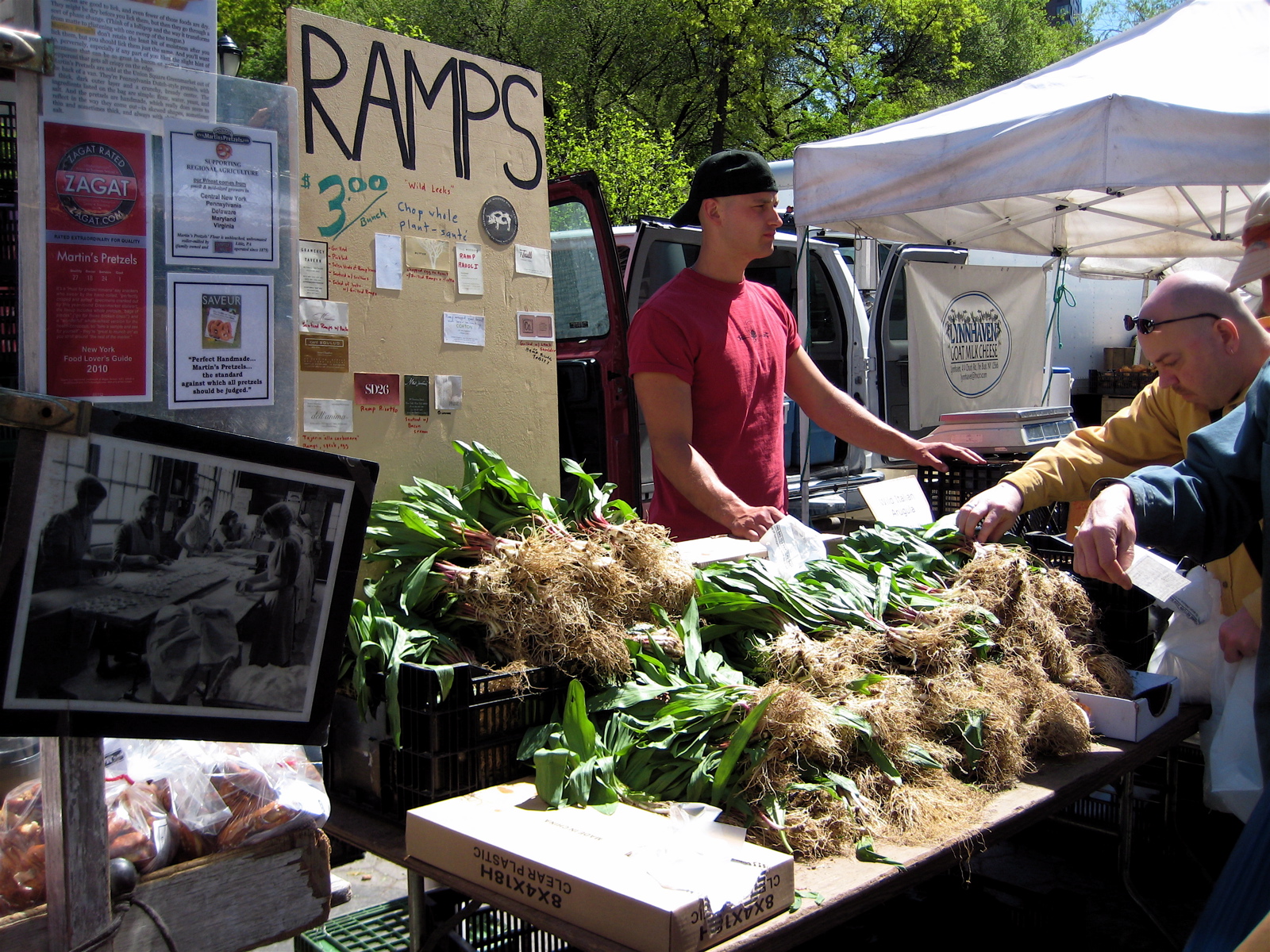 | ||||||||||||||||
"When you grow a vegetable yourself, you're less likely to boil it to death."
-- Irish chef Darina Allen | ||||||||||||||||
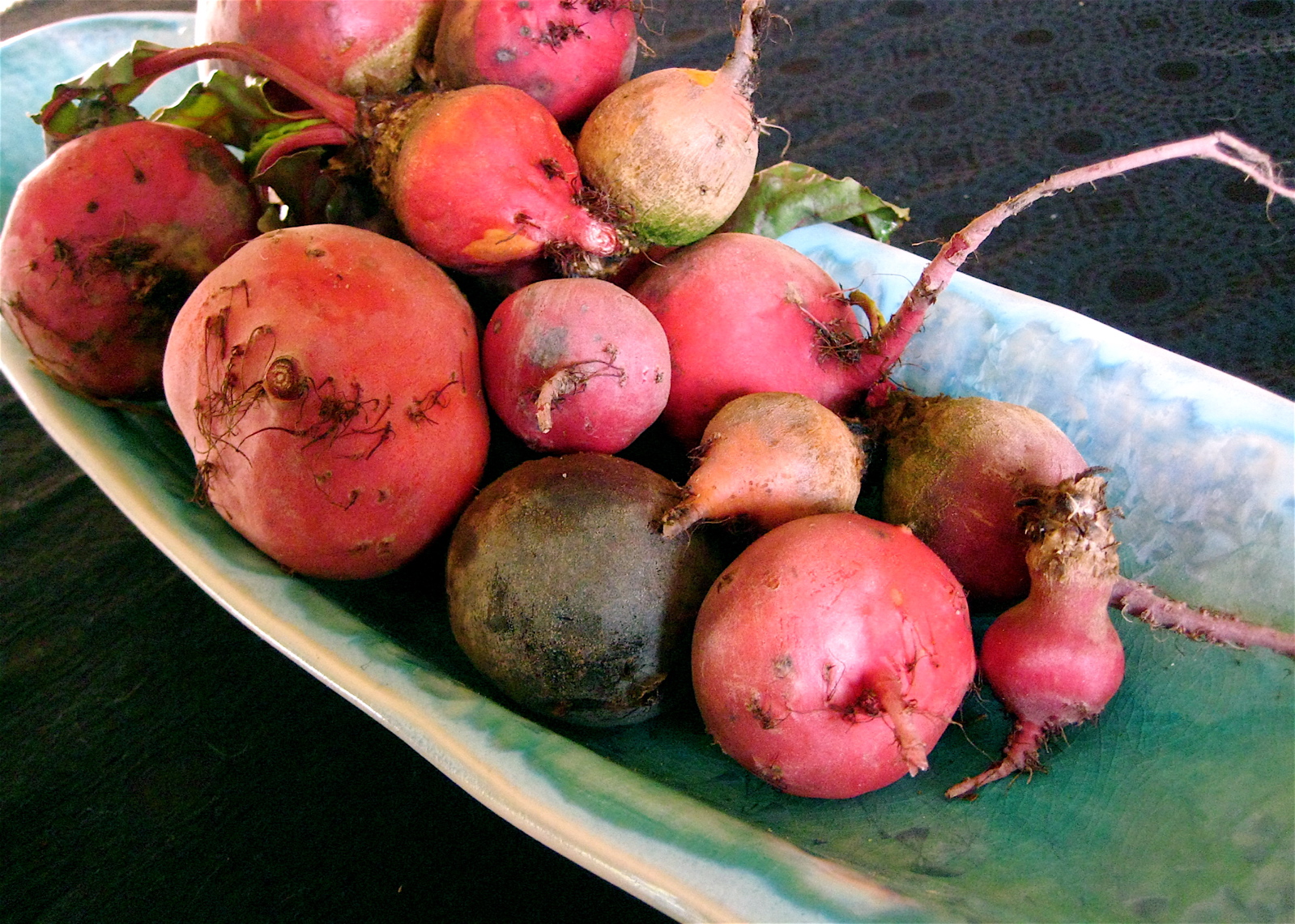 Last fall was complete chaos in our home. I was in the final weeks of getting my culinary degree, worrying more about my impending final exam than I had about anything else in my life to date, and was growing very weary of my year-long commute to the city, away from home and husband, for 5 nights a week. Every other detail seemed to go out with the compost. So it didn't surprise us much when a few months later, after a few good snowfalls, we both looked at each other and realized we had never harvested our second planting of our famed and favorite heirloom beets. While not a huge amount, there was about a bed and a half of beets still in the garden, now frozen solid to the ground. We treasure them, and were disappointed, and felt stupid and wasteful. Fast forward to yesterday's magnificent first kiss of spring weather. All I wanted to do was be outside, digging in something. I walked through one of our gardens, with the ground now visible for the first time in many months---and low and behold, there were tiny sprouts of beet greens peeking up from a variety of leafy debris. Further investigation, and a few dirty fingernails later, I discovered beets! A lot of beets! 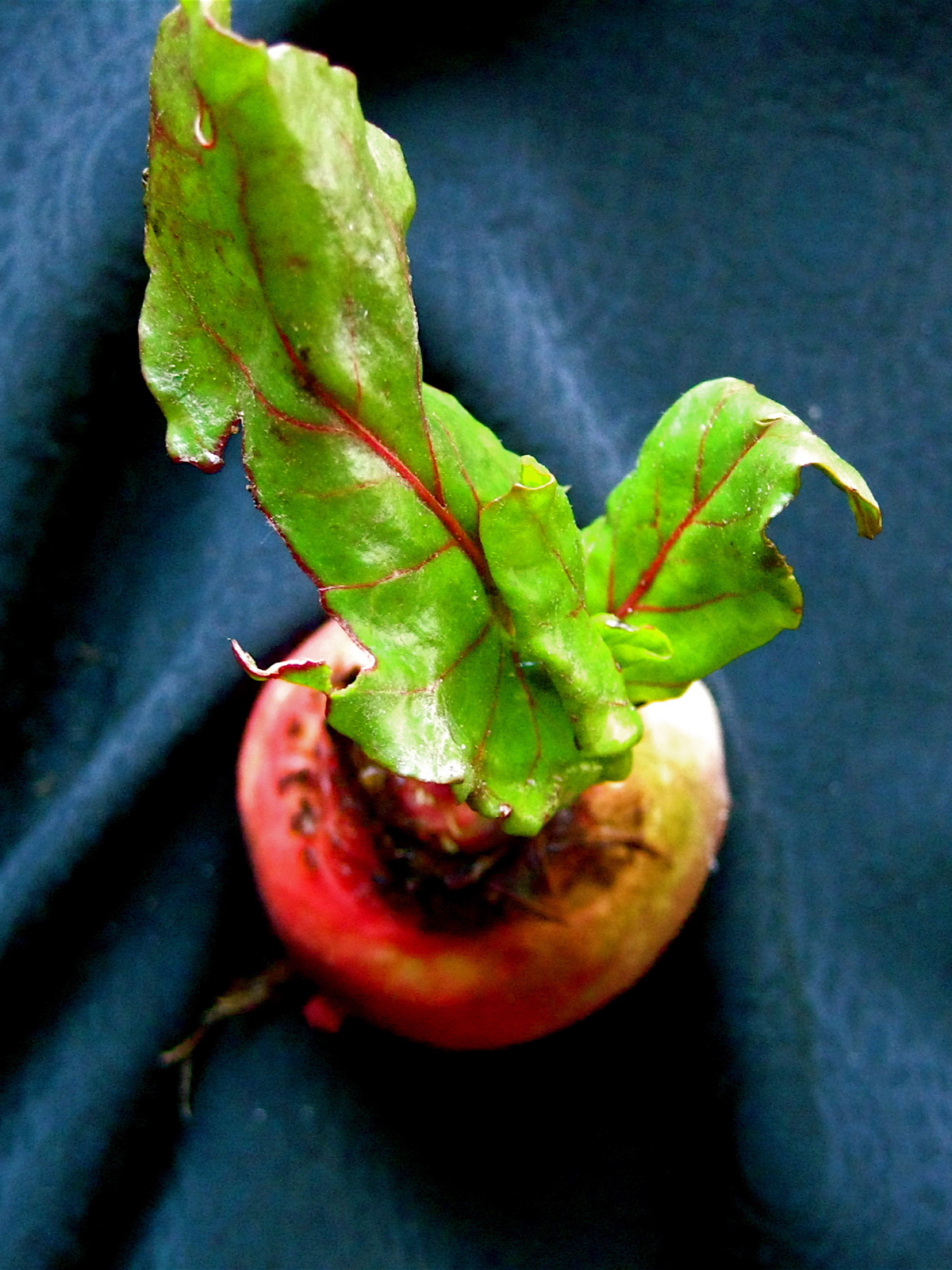 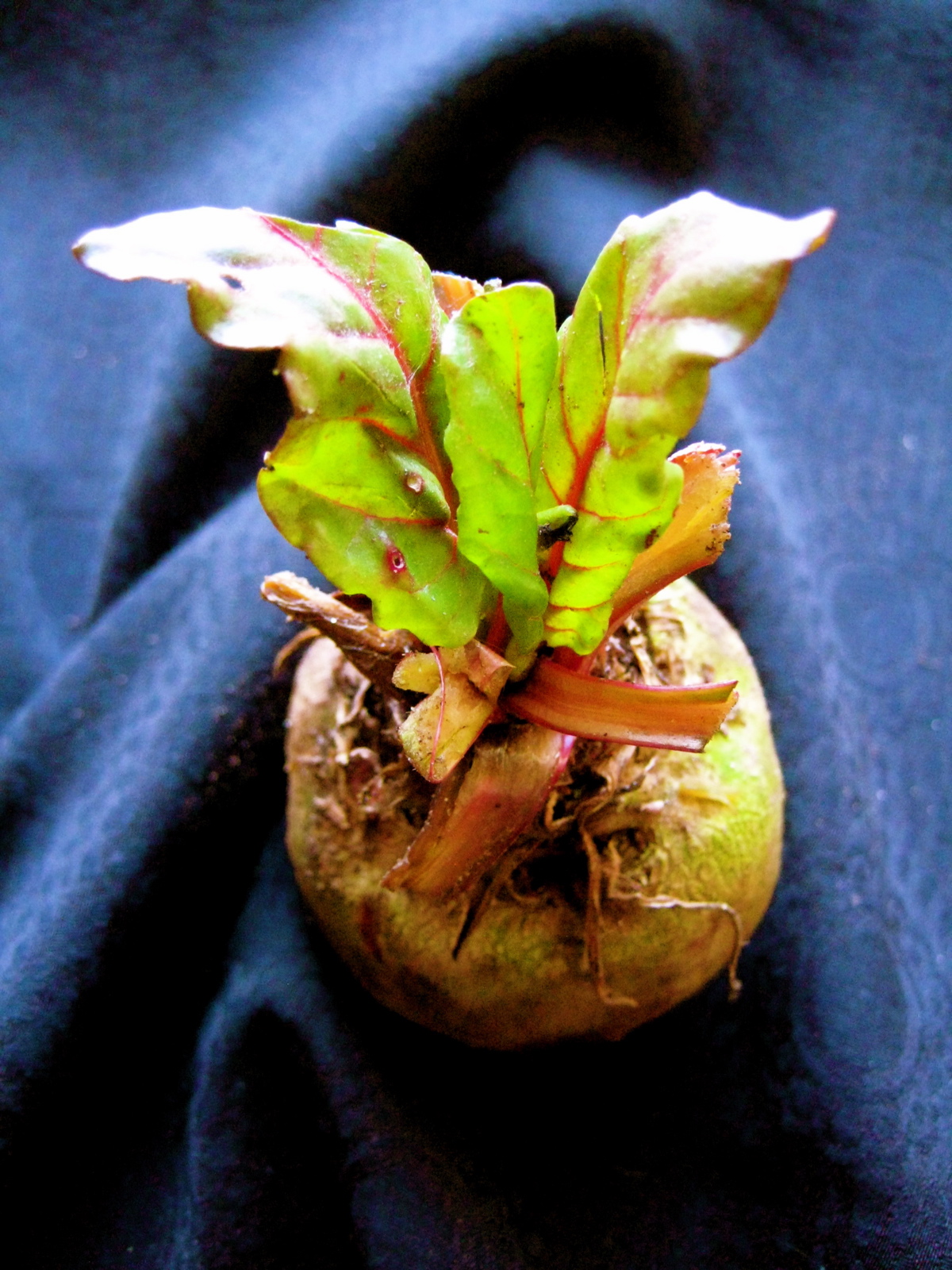 Our small second crop of golden, bull's blood, detroit dark red, and chioggia beets had successfully overwintered. Protected enough somehow by the mulch on top of the beds, and apparently benefiting from some very extended root systems, these beauties made it though, and managed to do so well enough that they now had the energy to start sprouting leaves again. Remarkable. And fresh beets for dinner in March. 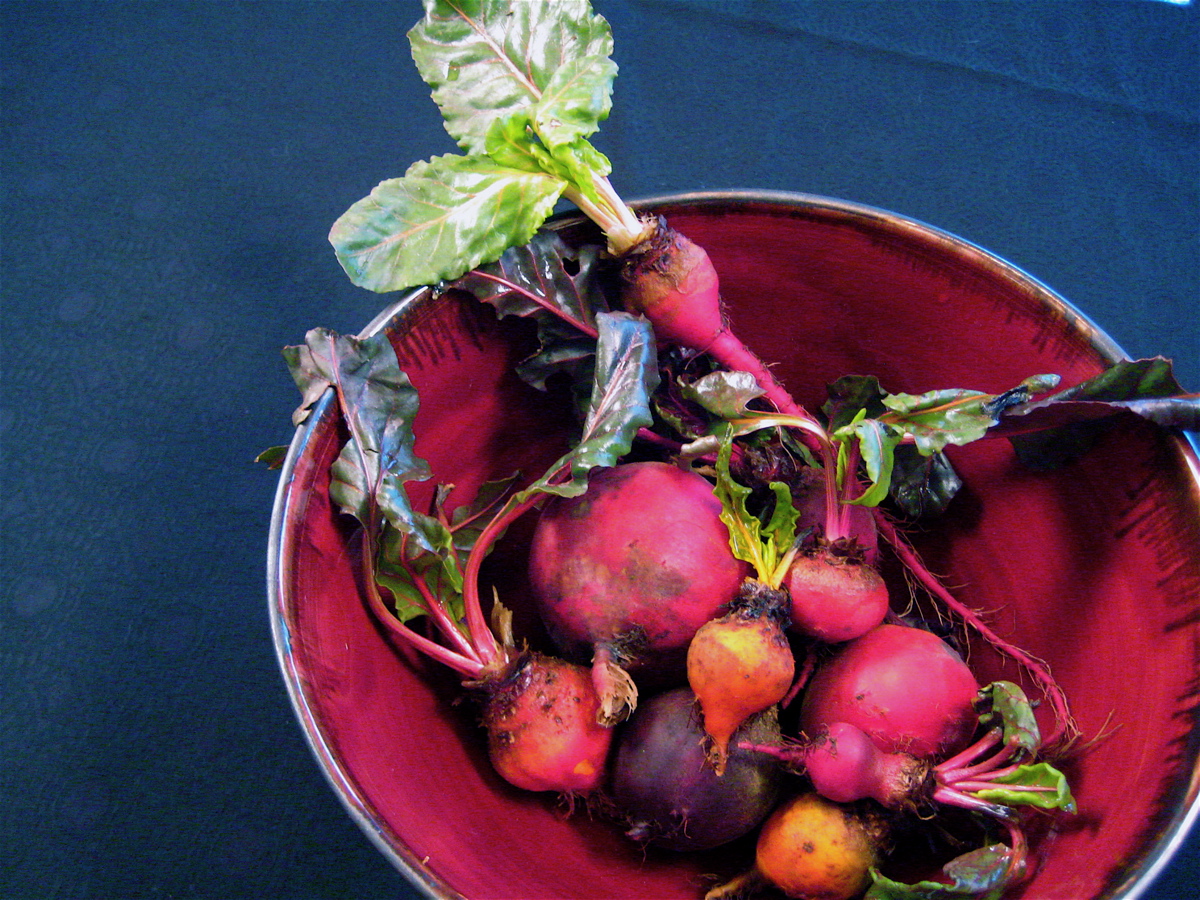 | ||||||||||||||||
Upstate New York, March 14, 2010.
[caption id="attachment_255" align="alignnone" width="500" caption="Oregano returns."] 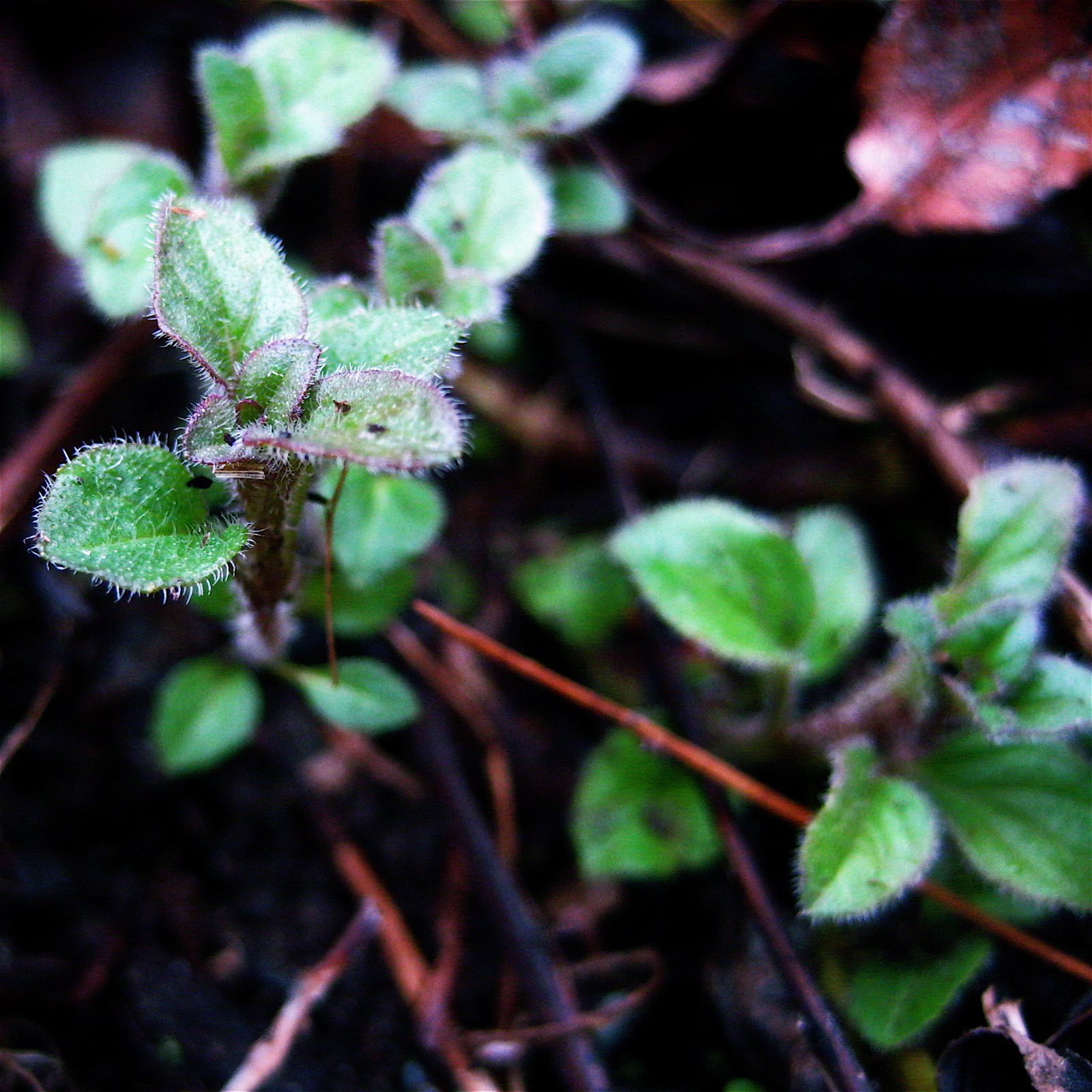 [/caption] [/caption][caption id="attachment_256" align="alignnone" width="500" caption="First chives of the season."]  [/caption] [/caption][caption id="attachment_257" align="alignnone" width="500" caption="Thawed sheep pen. (We're definitely not in Brooklyn anymore.)"]  [/caption] [/caption] | ||||||||||||||||
Farmers are my heros. As a chef and food fanatic, they are the mamas and papas, surrogates and midwives of my most precious ingredients. As an upstate resident, they are the fierce protectors of our land, farming heritage, and heirloom varieties of animals and vegetables. And since moving upstate, I have had the great pleasure of getting to know many of these amazing neighbors--and then getting to visit them at the market in Union Square.
Rick Bishop of Mountain Sweet Berry Farm is one of the rockstars of the Greenmarket, and a friend of ours. He is adored by the most brilliant of chefs and grows the most magnificent strawberries (Tristar) and heirloom fingerling potatoes, among many other treasures. Keep an eye out for his table overflowing with ramps in the early spring. Seriouseats.com did a great short film about Rick a little while back. Definitely worth a few minutes of your time, particularly in the doldrums of winter. I love Alexandra Guarnaschelli's comment about Rick in the video: "When I buy your potatoes, and I bring them back to the restaurant, and I put them in the oven, I can smell your soil, baking, in the oven...I love your dirt, and he said "It's not dirt, it's soil, and it's a living, breathing thing." Yes. | ||||||||||||||||
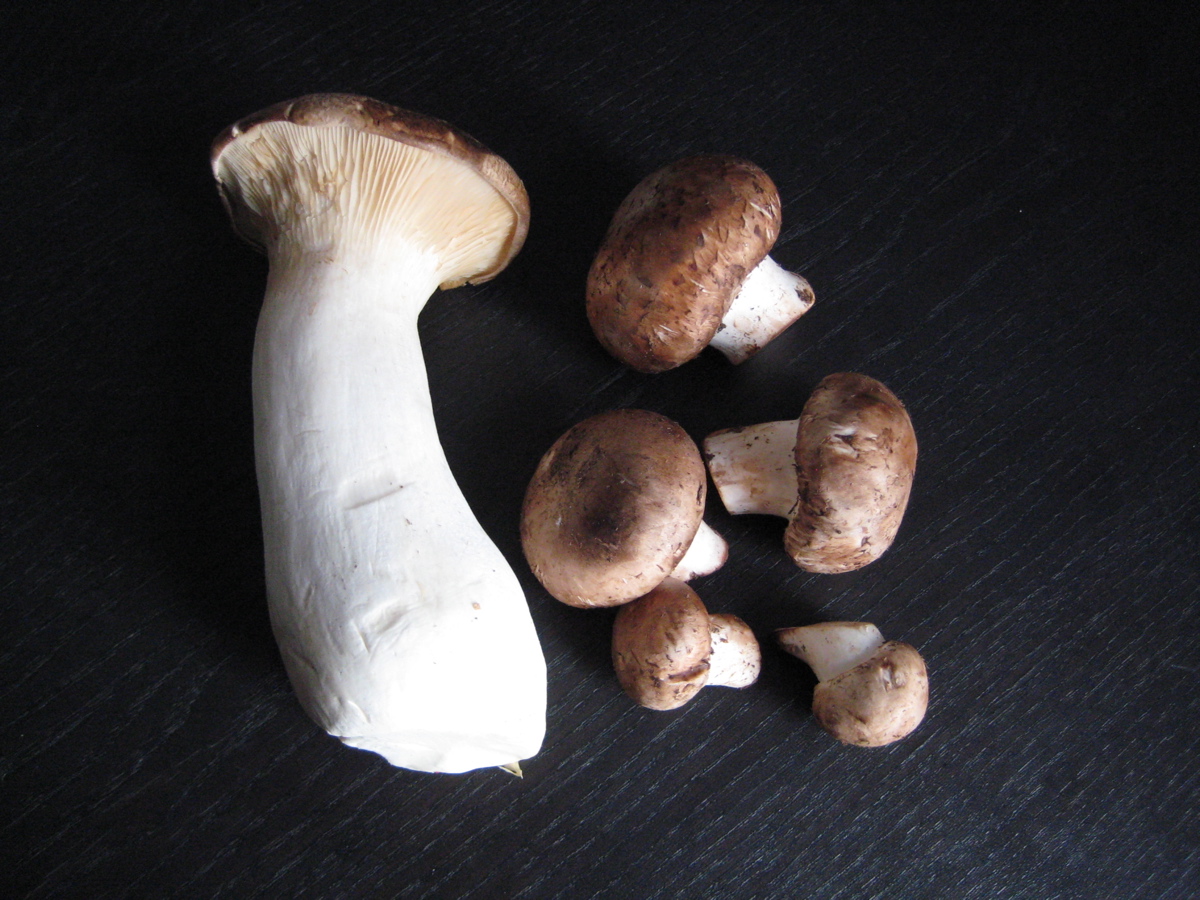 Beginning a few years ago, my husband and I have made almost every effort to cook and eat as seasonally and locally as possible. We are continually making changes to our lifestyle, but don't feel like we are really making any huge culinary sacrifices. Each season we do dig up more and more of our backyard to add to our vegetable and herb gardens (currently at about 2,200 sq feet). We blanch, freeze, can, dry and preserve as much as we physically have time for, both from our own plants and all the area farmers markets. All with hopes of having a little bit of those glorious, most prolific, summer produce months available to us in colder times. Beginning a few years ago, my husband and I have made almost every effort to cook and eat as seasonally and locally as possible. We are continually making changes to our lifestyle, but don't feel like we are really making any huge culinary sacrifices. Each season we do dig up more and more of our backyard to add to our vegetable and herb gardens (currently at about 2,200 sq feet). We blanch, freeze, can, dry and preserve as much as we physically have time for, both from our own plants and all the area farmers markets. All with hopes of having a little bit of those glorious, most prolific, summer produce months available to us in colder times.However, this time of year it gets tough. We are down to about five of the treasured quart jars of plum tomatoes we bought in flats from our farmer Seth Heller at the local market in August and canned over a weekend (all 45 of our heirloom tomato plants died in this year's blight, described here by Dan Barber http://www.nytimes.com/2009/08/09/opinion/09barber.html?scp=1&sq=tomato%20blight%20barber&st=cse). We've mostly used up our squash, garlic, shallots, and beets that were in cold storage, and are growing a little weary of produce, though frozen minutes from when picked, plucked from our freezer. Thankfully, there are farmers markets still operating this time of year! I visited the Union Square Greenmarket in NYC this past Friday (I split my time nearly 50/50 between the city and the very rural NY Catskills--more on this later). Though smaller than in warmer months, there is still a strong number of booths, offering a big variety of produce, meat, cheeses, and local foodstuffs to the urban locavore. I did some grocery shopping, and came home with a heavy bag of fresh food. Parsnips, carrots, celeriac, crimini and king oyster mushrooms, kale and Mutzu apples. Combined with the chickens and eggs we get from the local farm Quails-r-Us each week, February is not looking so much like a culinary wasteland in upstate New York. Recipes from this week's bounty to follow shortly, as well as every week hereafter.  [gallery] | ||||||||||||||||
|
{ welcome! }
 Catie Baumer Schwalb is a chef, food writer and photographer, who splits her life between the city and the country. Not too long ago Catie was a New York City based actress and playwright for more than a decade. She has her Master of Fine Arts from the National Theater Conservatory, and her Grand Diplôme in classic culinary arts from the French Culinary Institute in New York City.
... Read More ≫
Catie Baumer Schwalb is a chef, food writer and photographer, who splits her life between the city and the country. Not too long ago Catie was a New York City based actress and playwright for more than a decade. She has her Master of Fine Arts from the National Theater Conservatory, and her Grand Diplôme in classic culinary arts from the French Culinary Institute in New York City.
... Read More ≫{ get in touch }
{ what's new }
September 12, 2015
August 19, 2013
August 15, 2013
August 13, 2013
August 1, 2013
{ favorites }
{ archives }
Appetizers / Breads & Pastry / Breakfast / Cakes / Canning / Condiments / Dinner / DIY foods / Drinks / Fall / favorites / Grains / Holidays / Local / Noodles & Pasta / Pies & Tarts / Poultry / Salads / Seafood / Snacks / Soup / Spring / Summer / Sweets / Techniques / Vegetables / Vegetarian / Winter /
{ currently reading }
|




